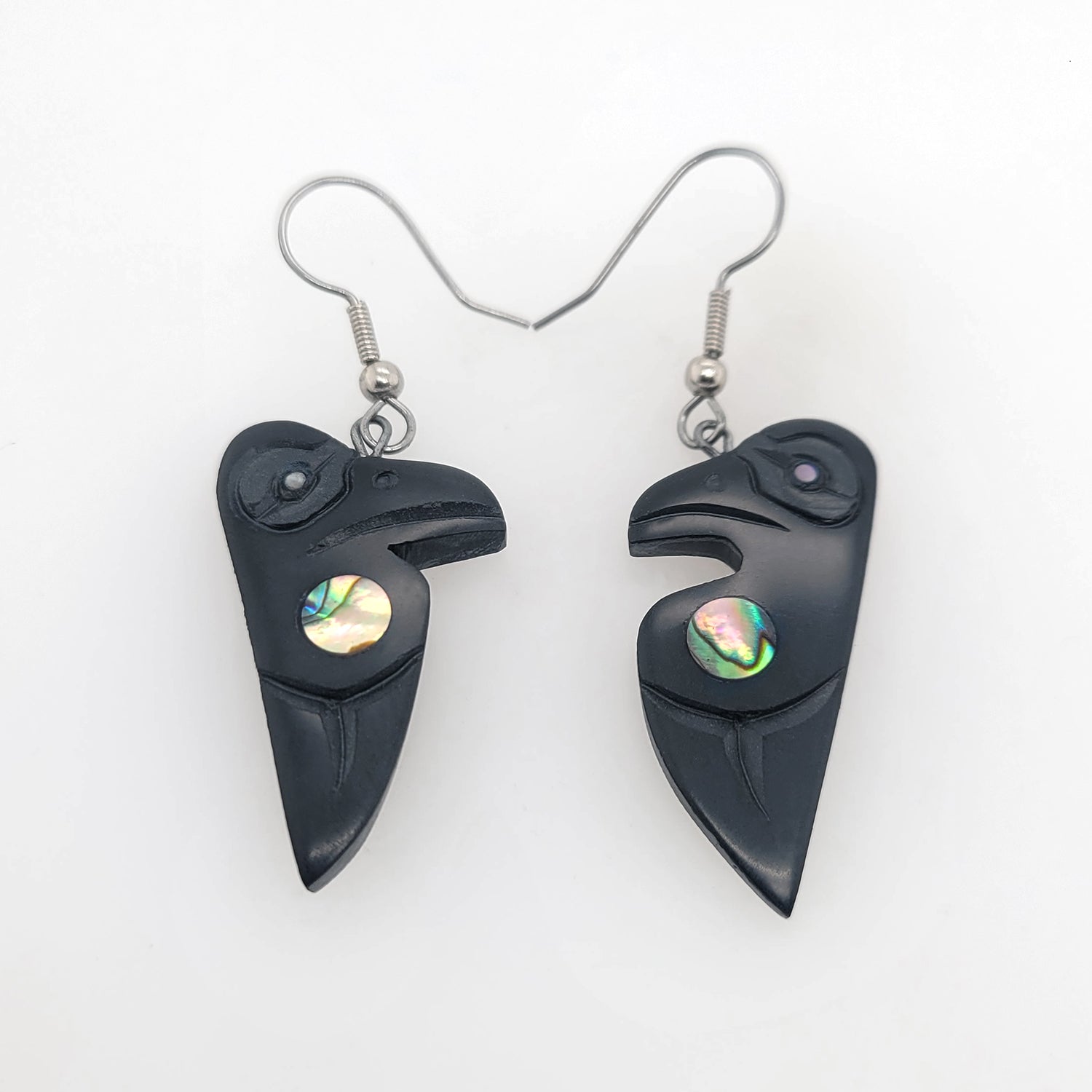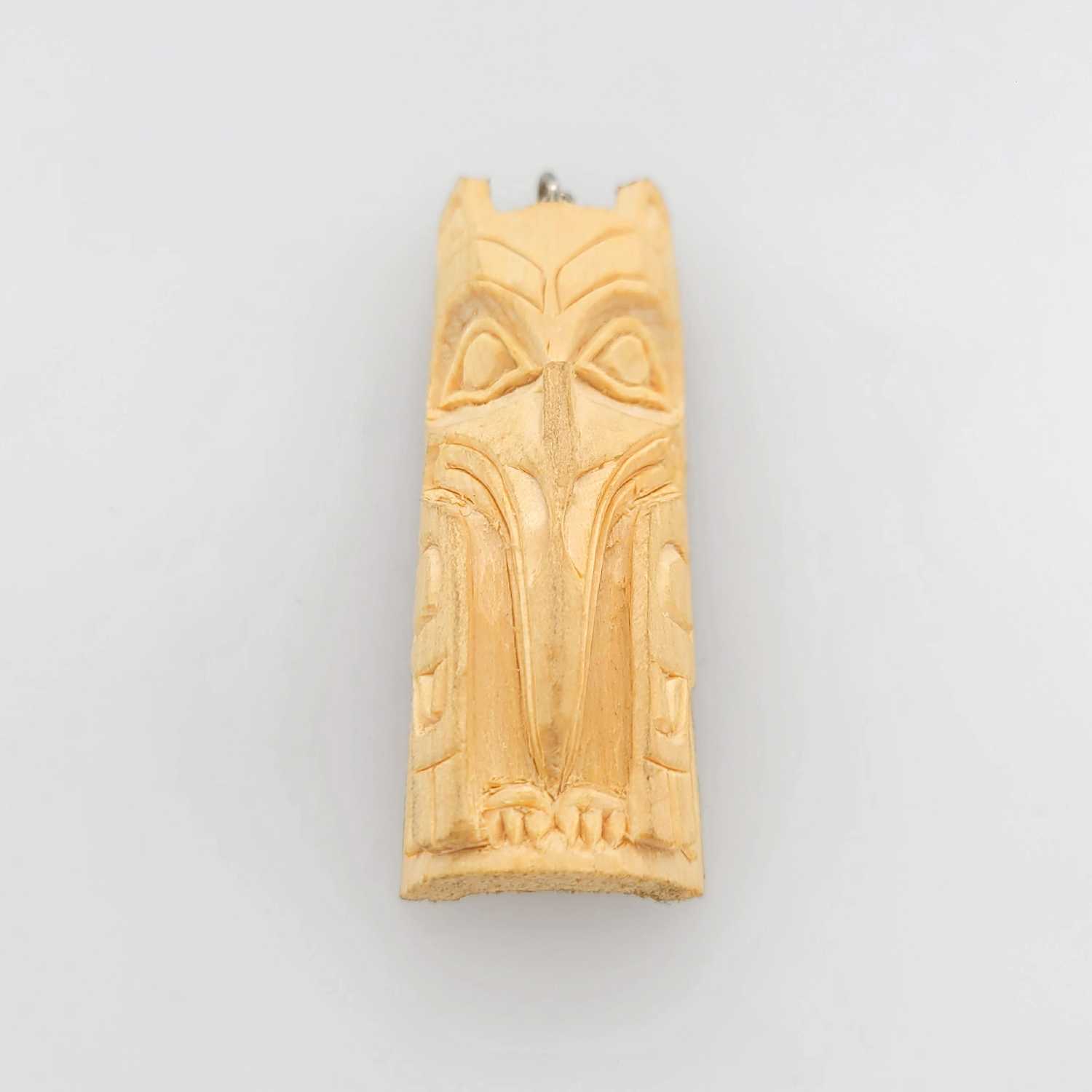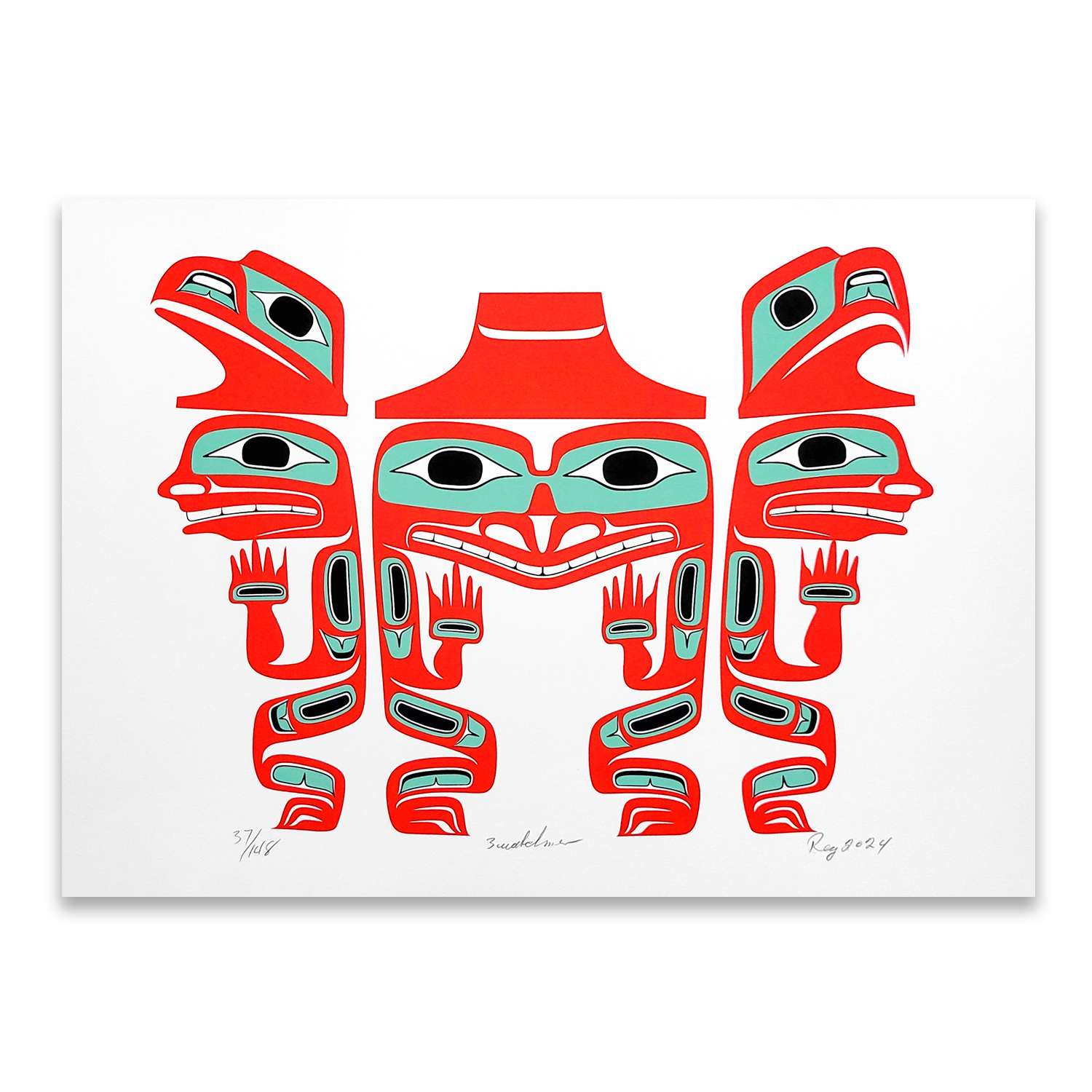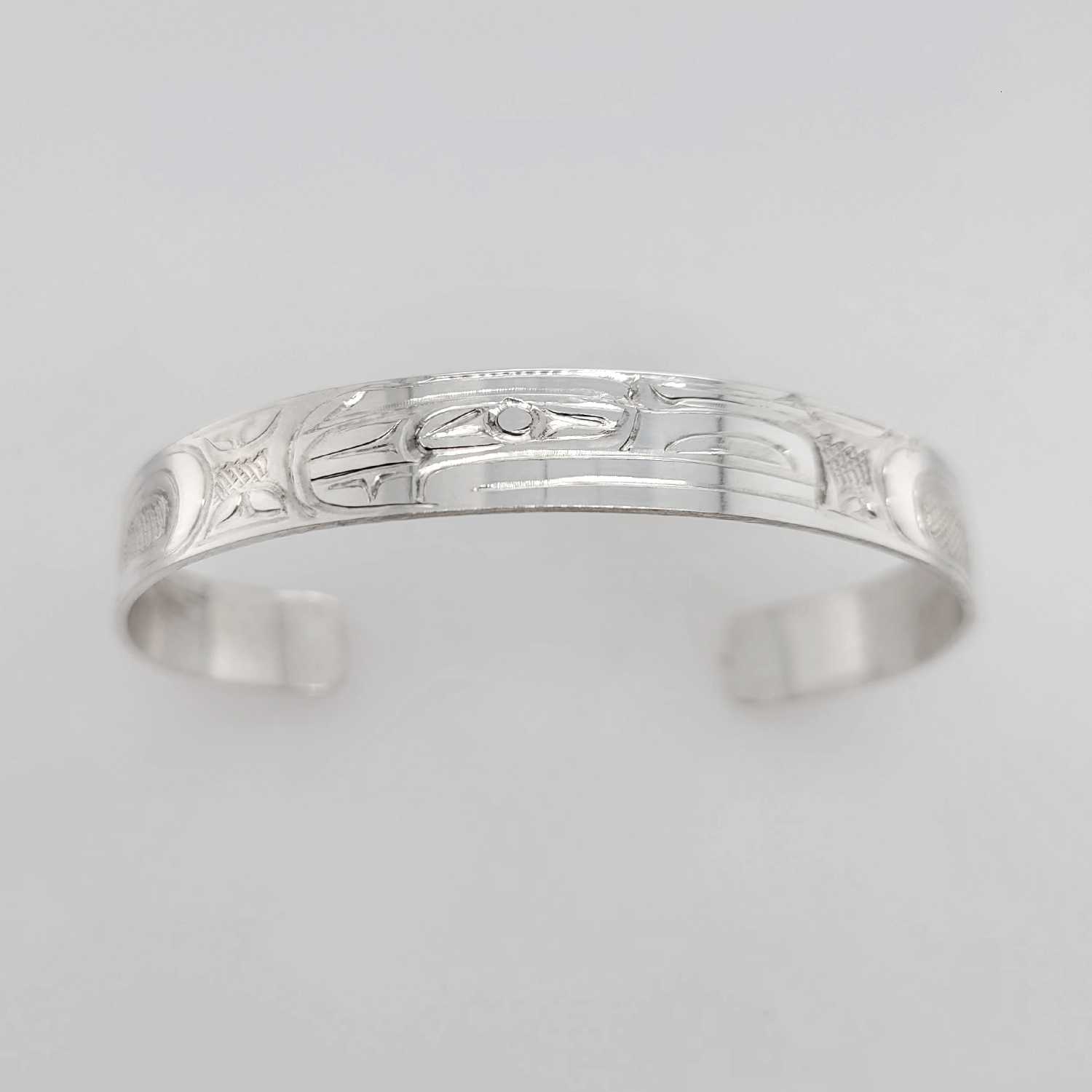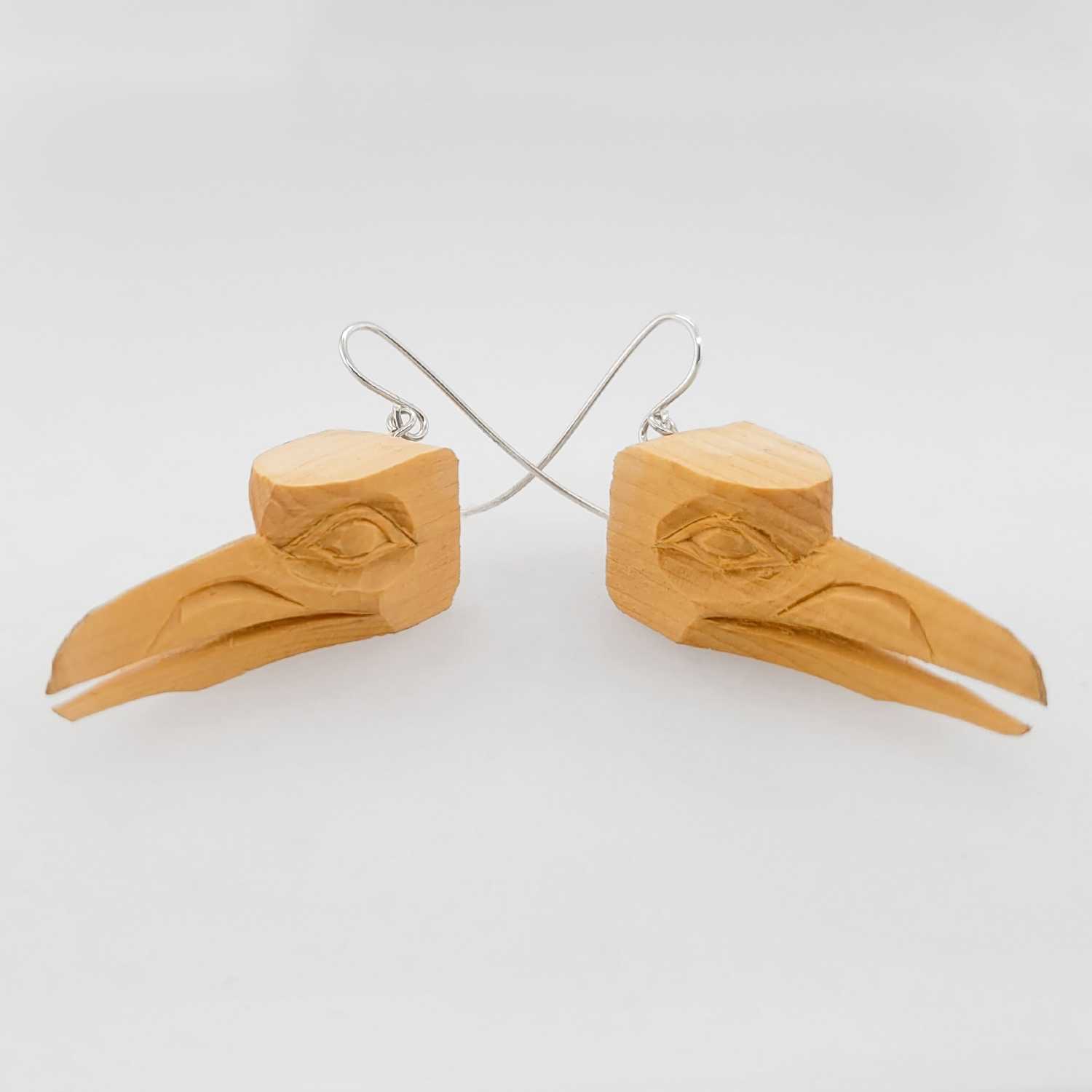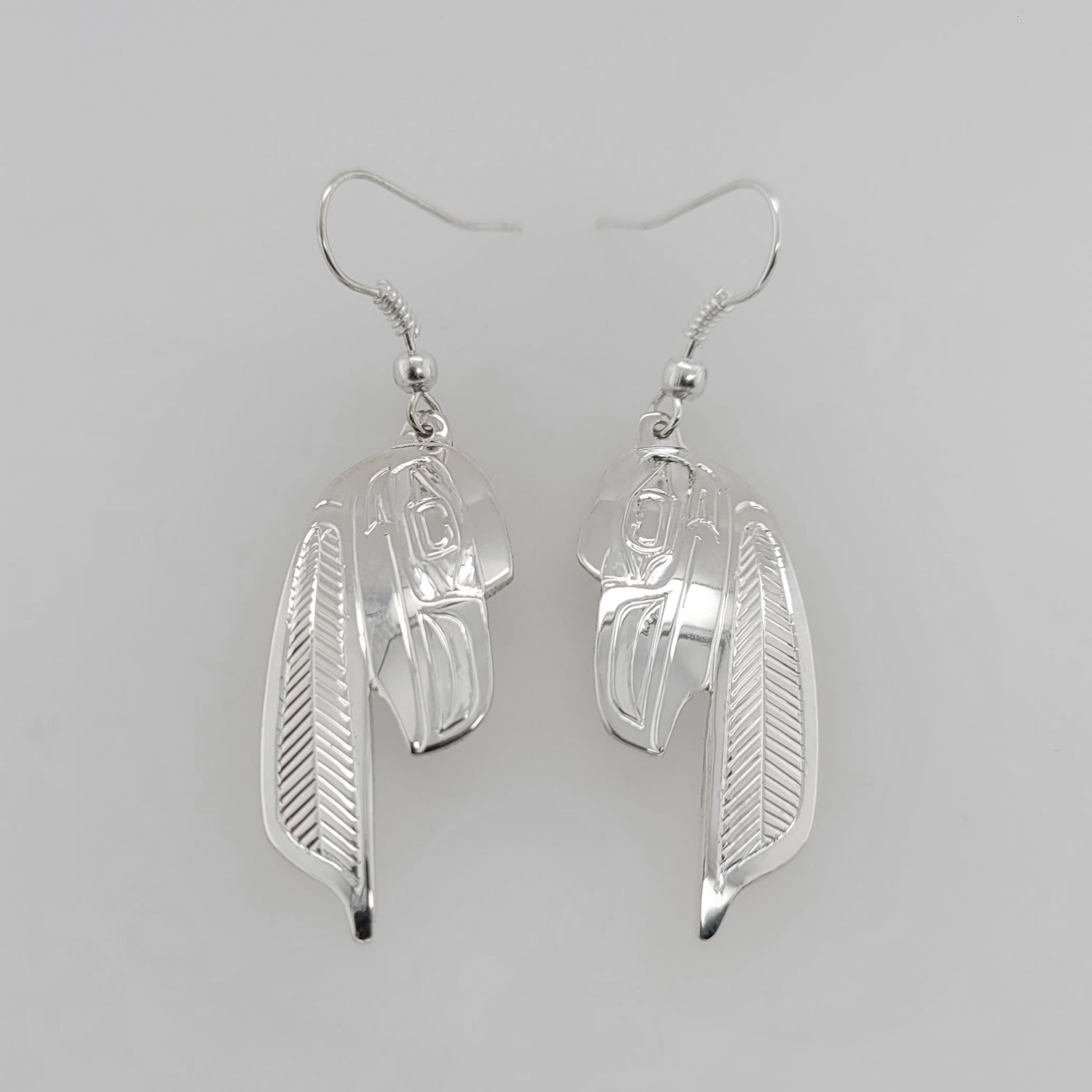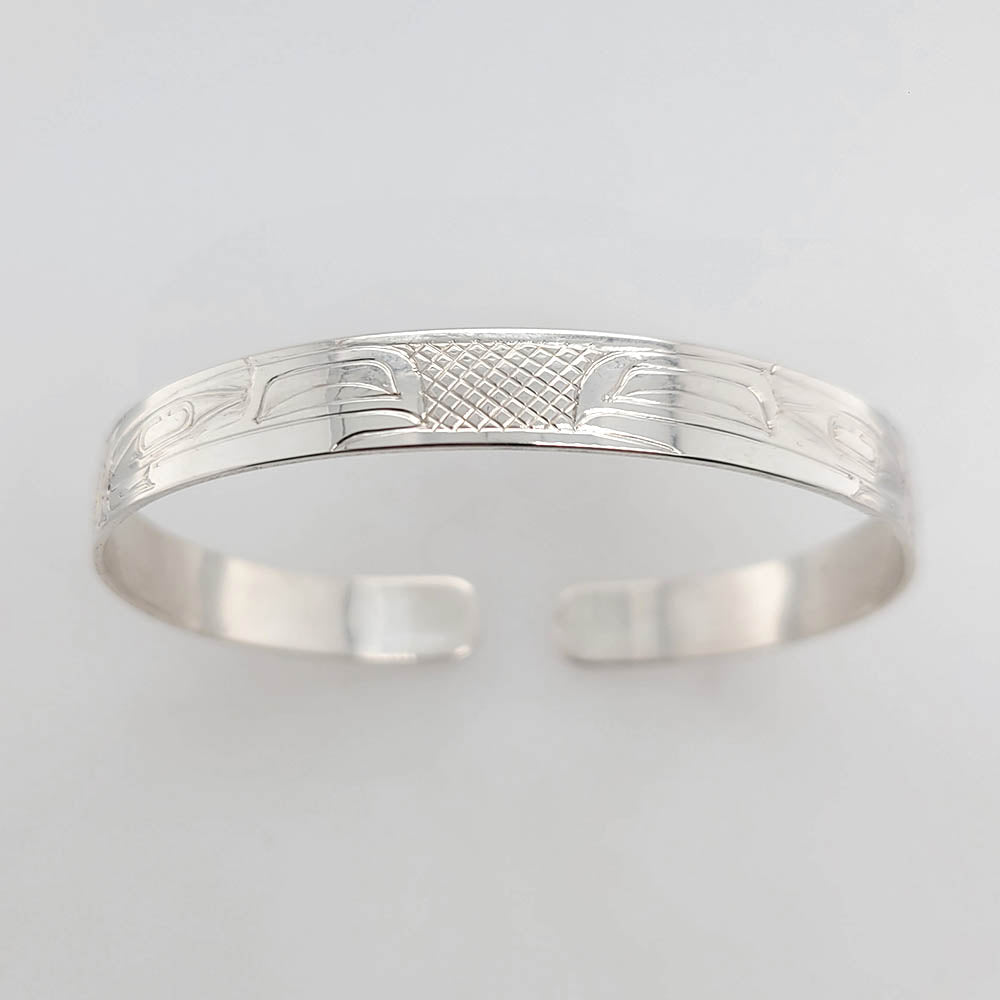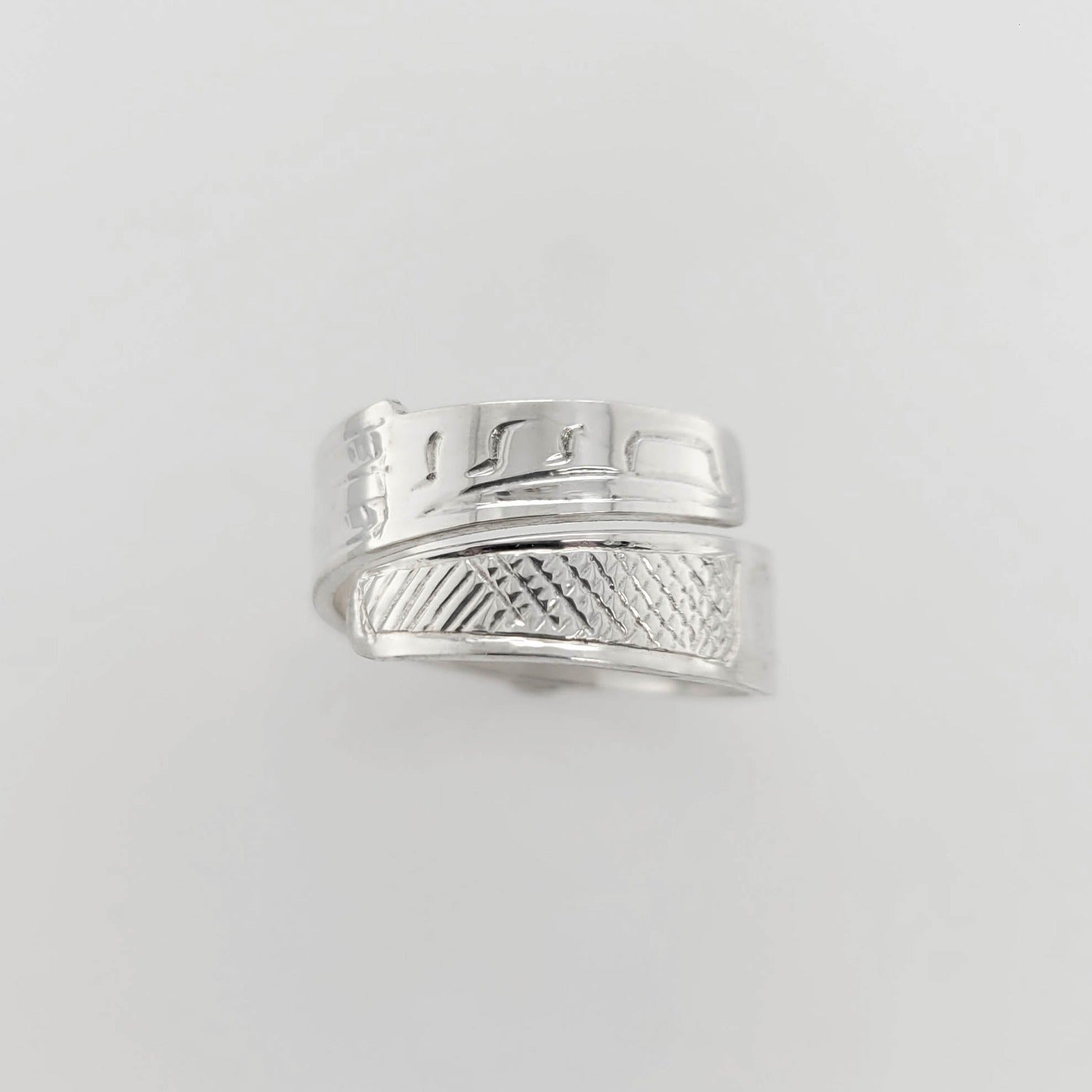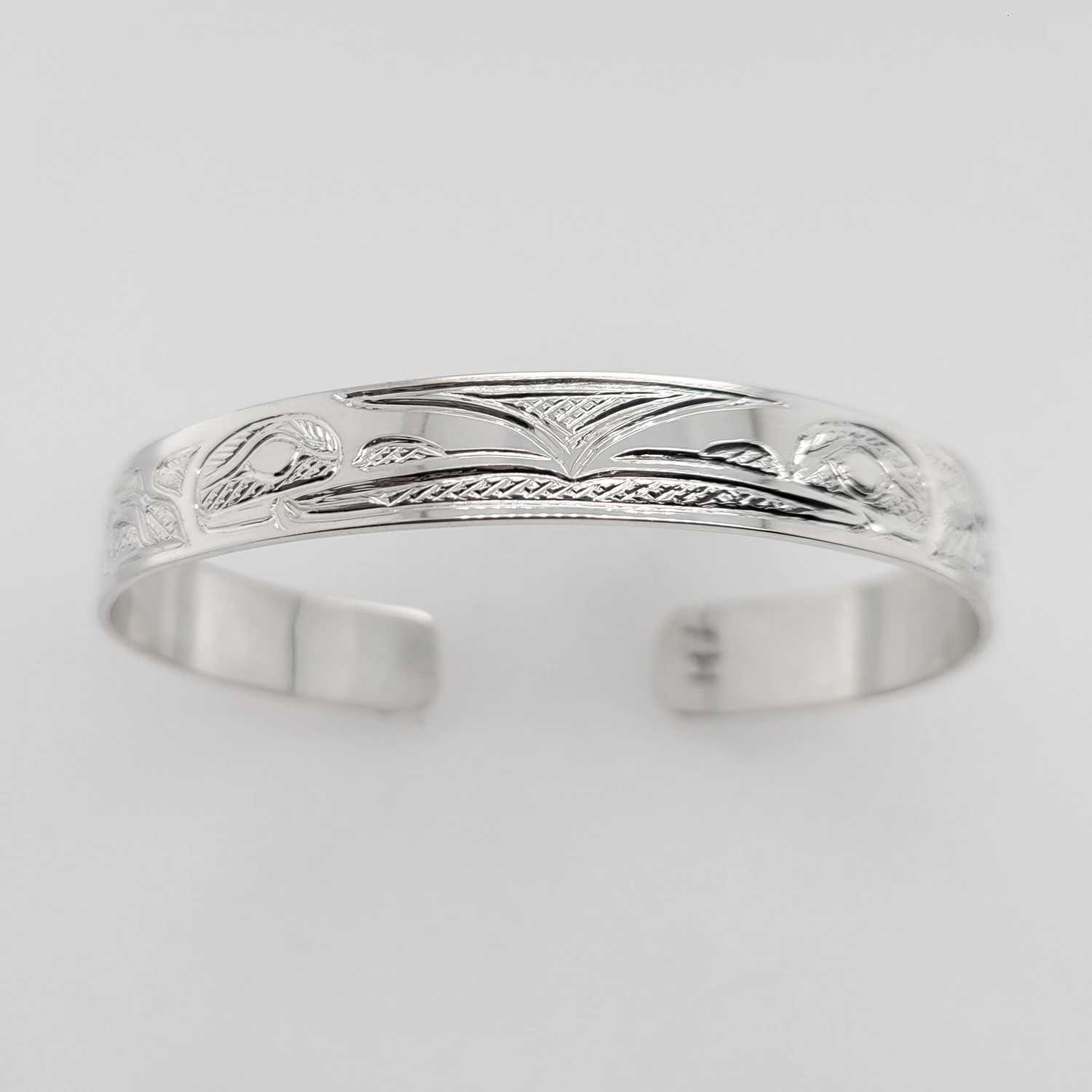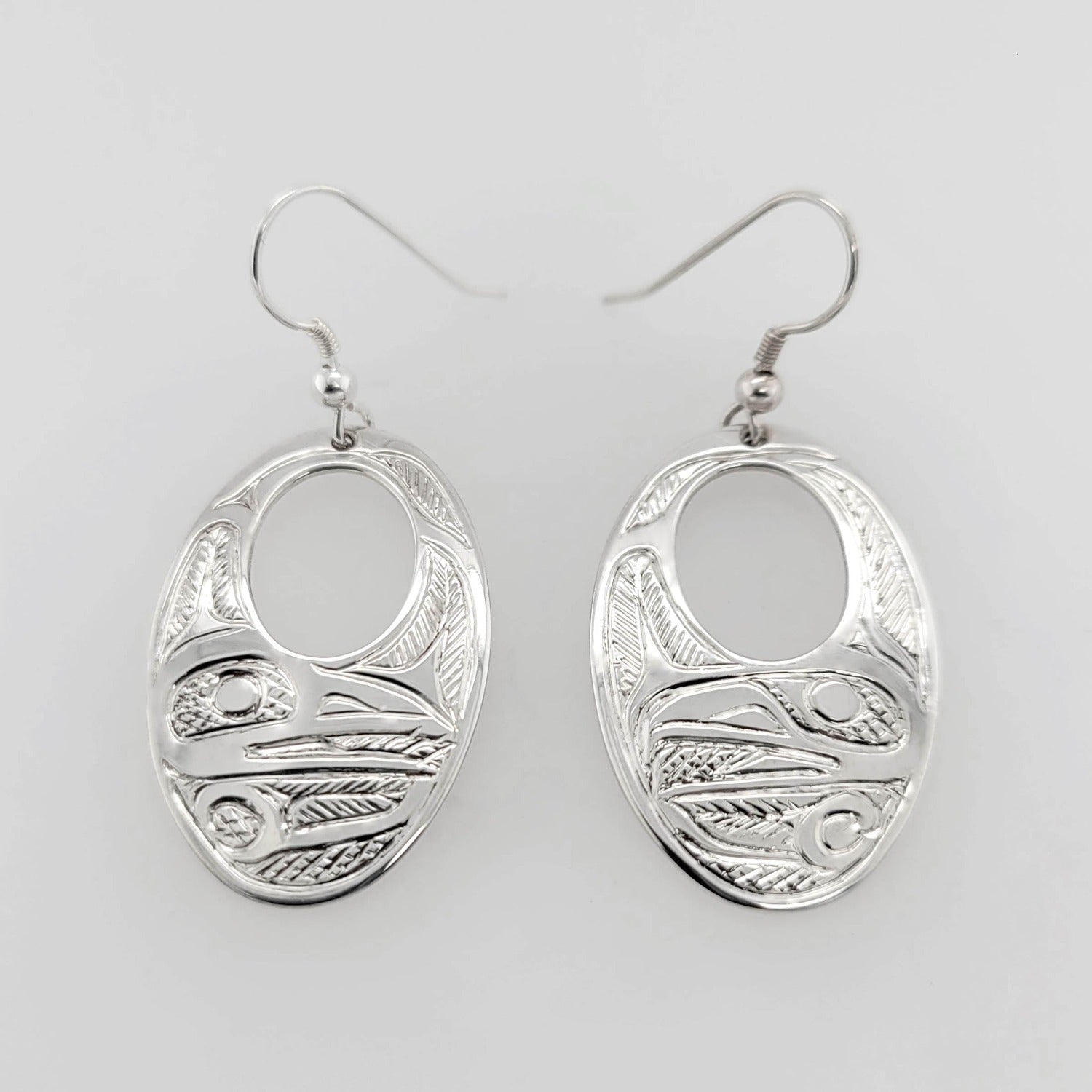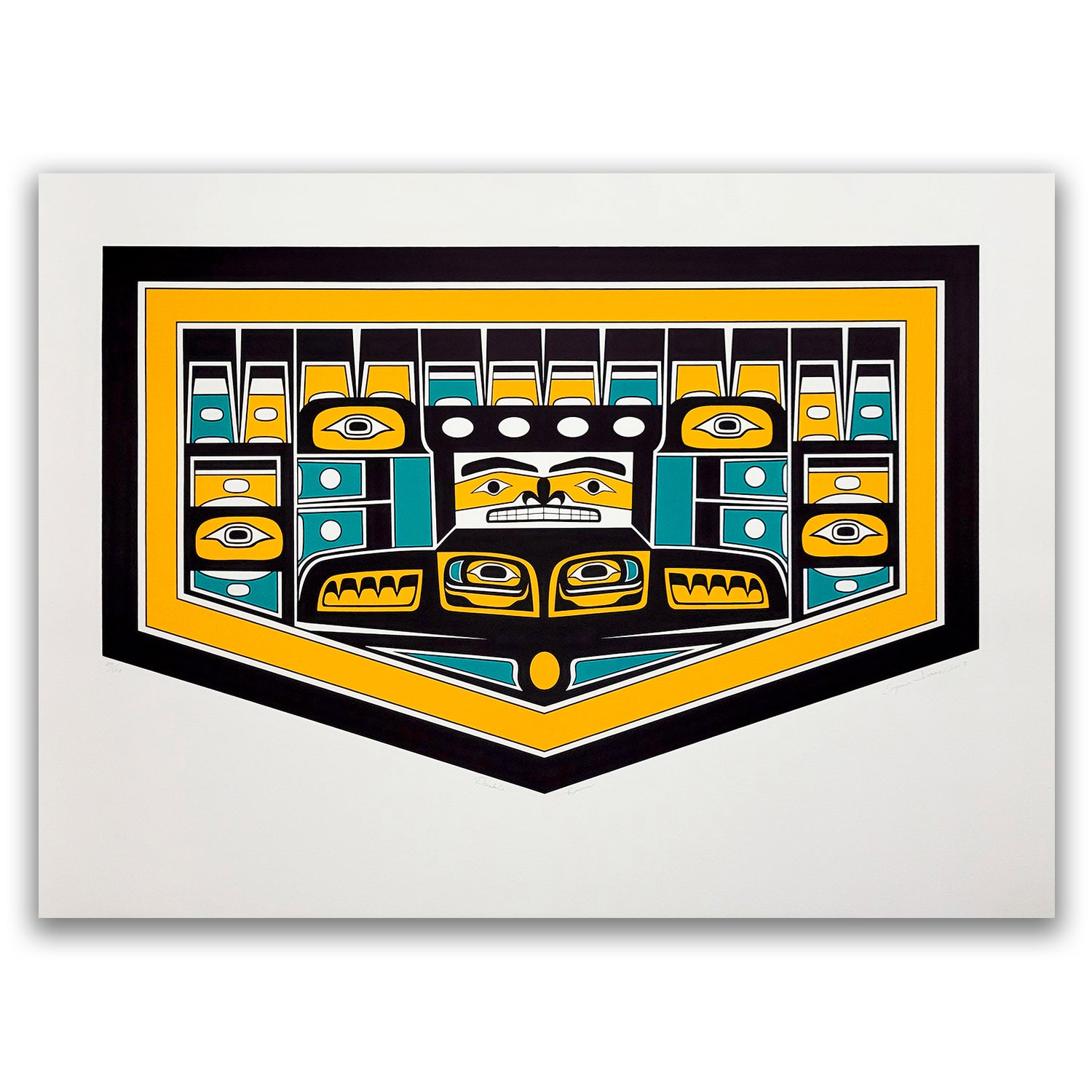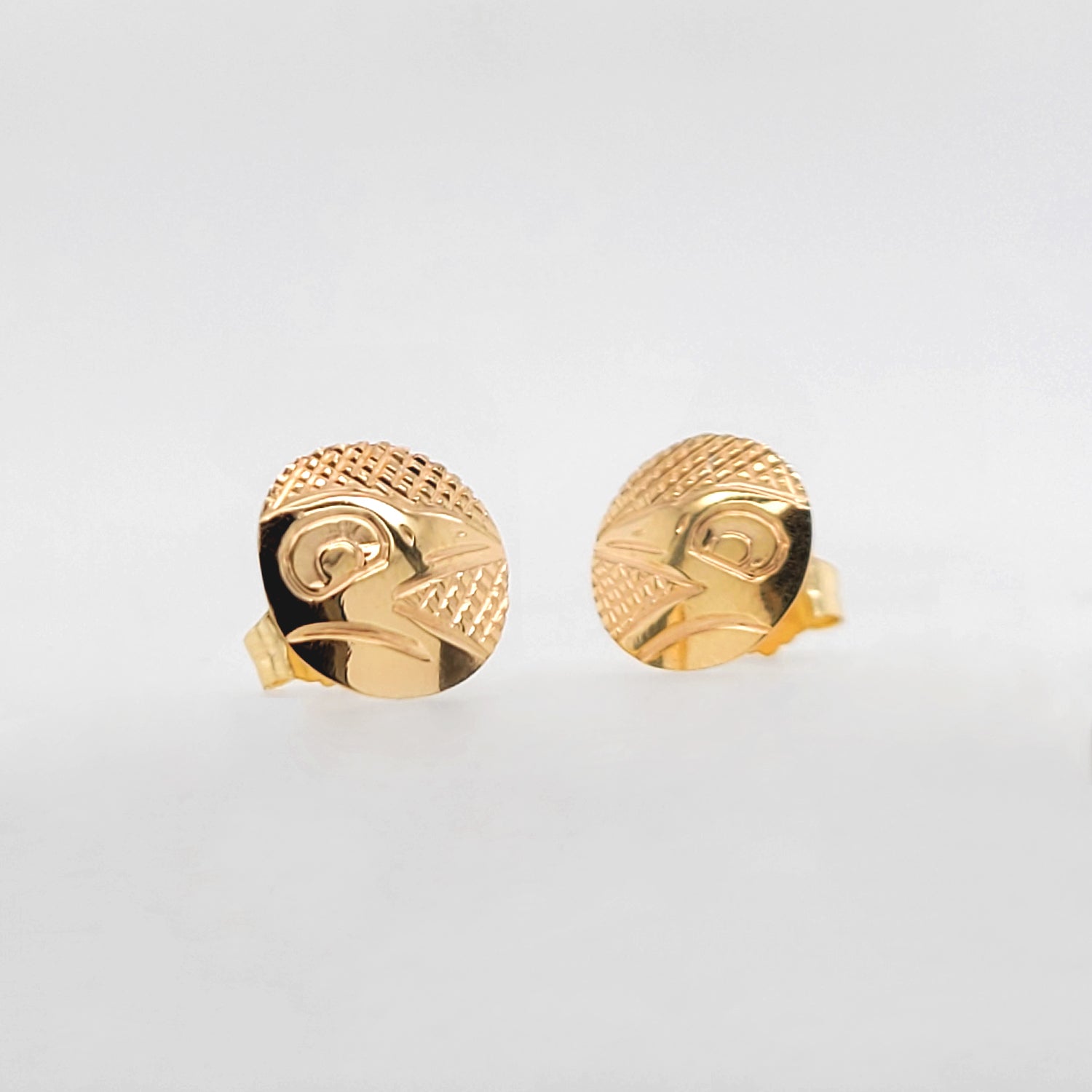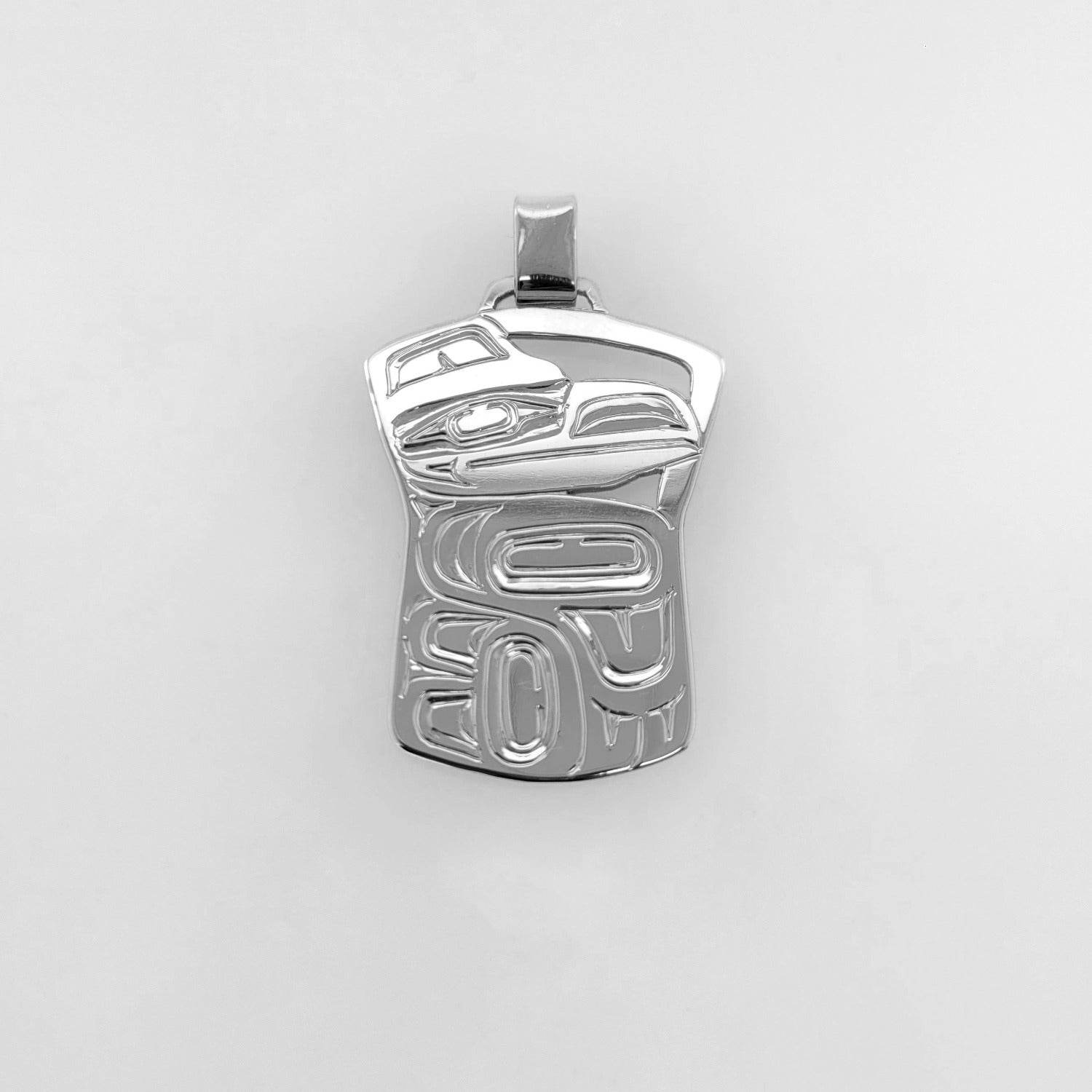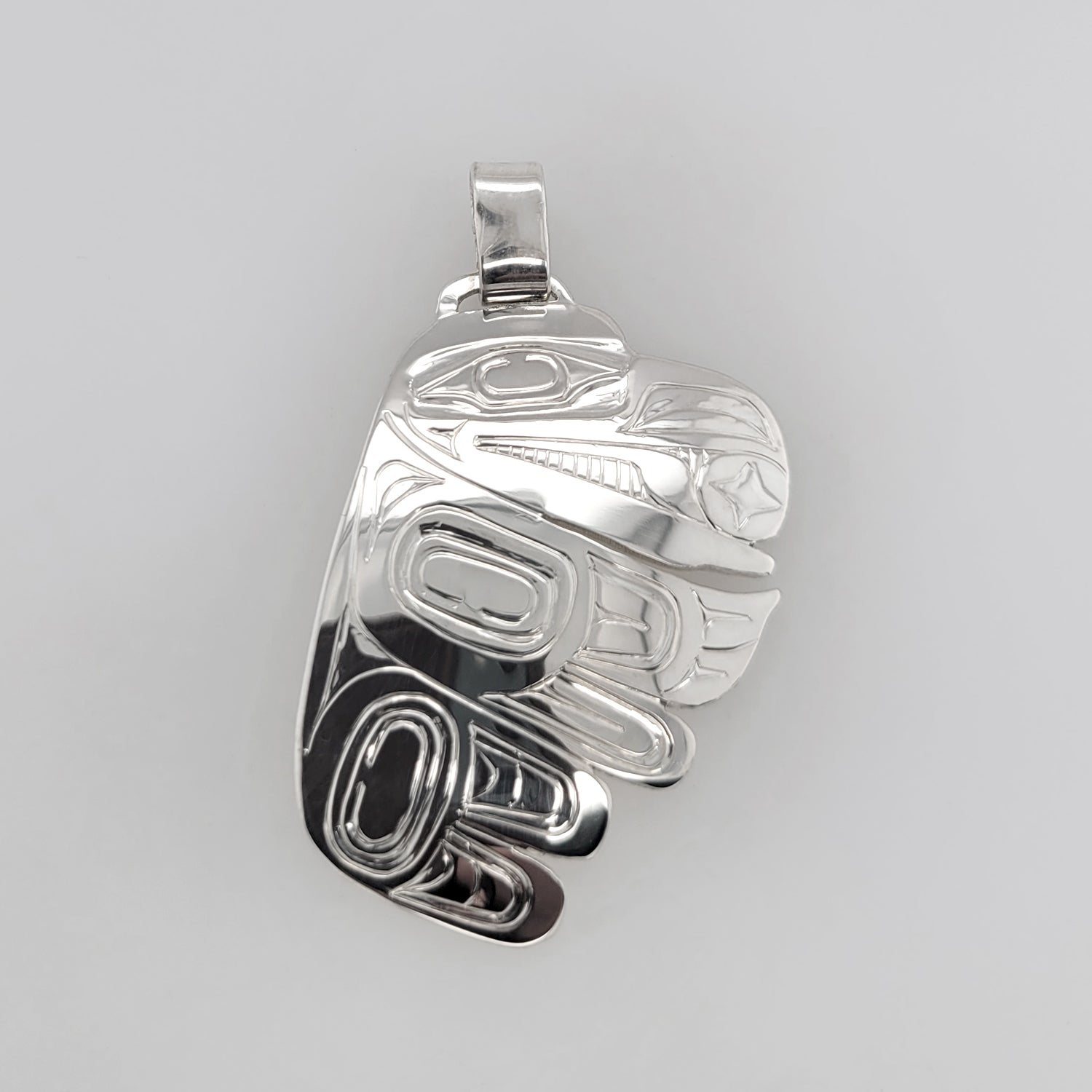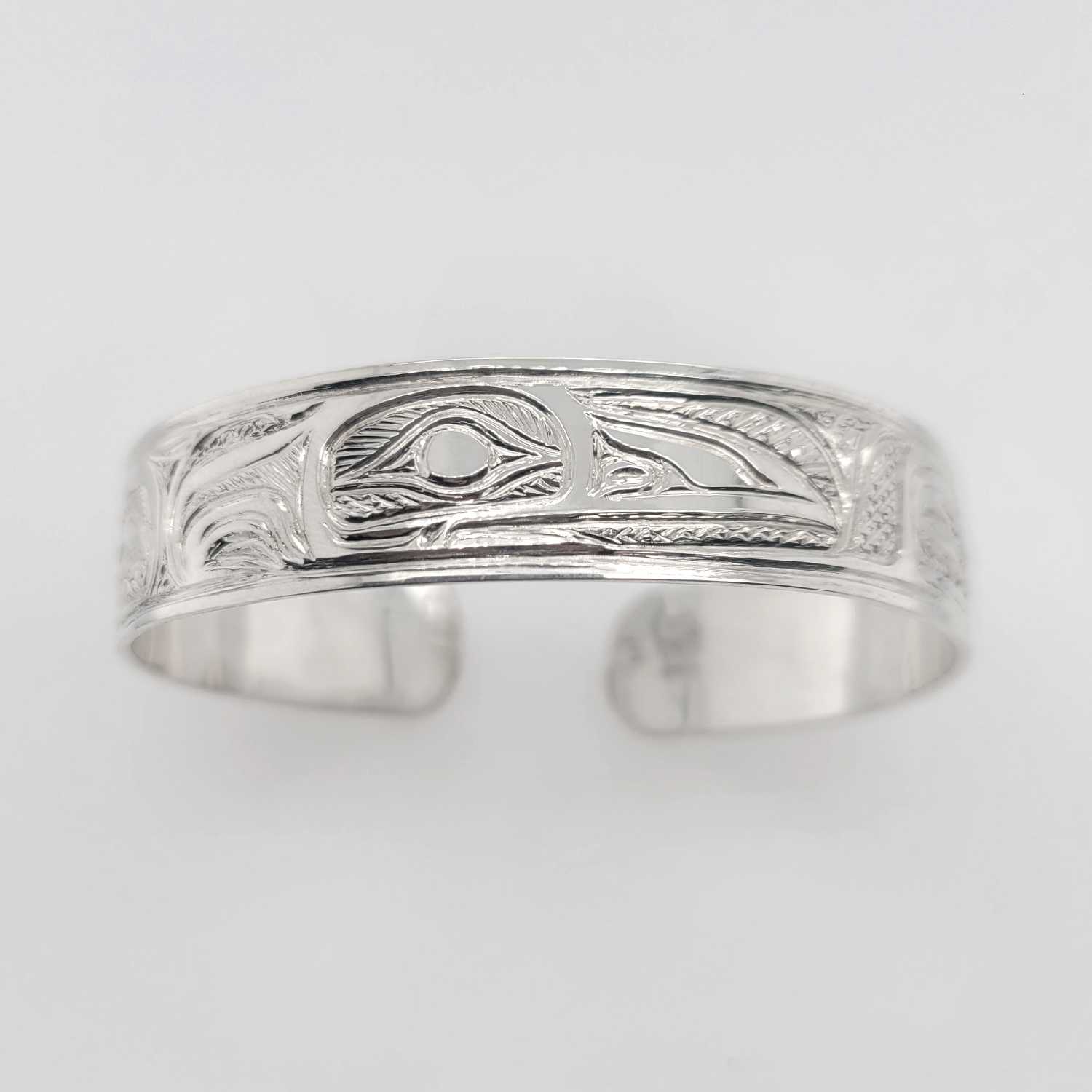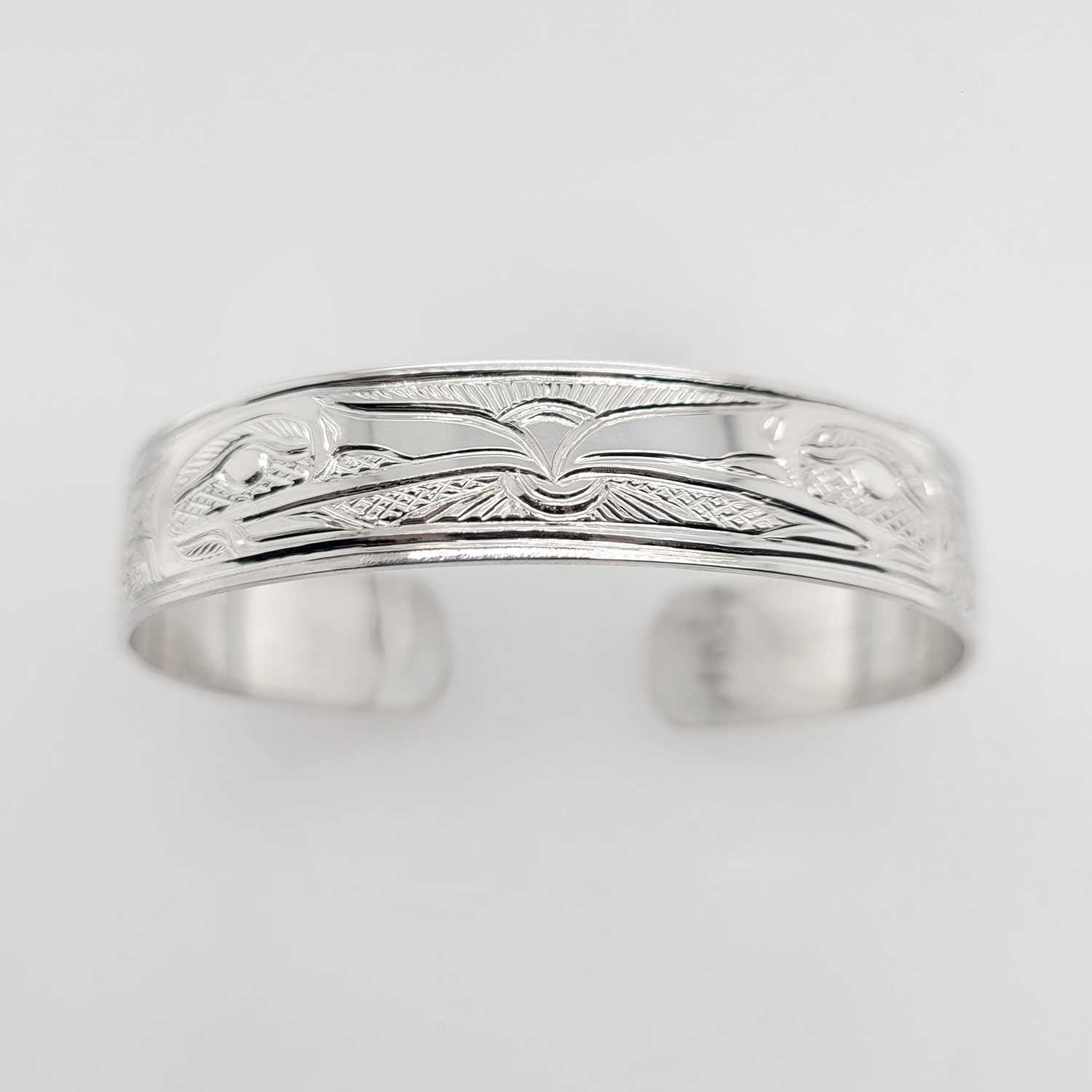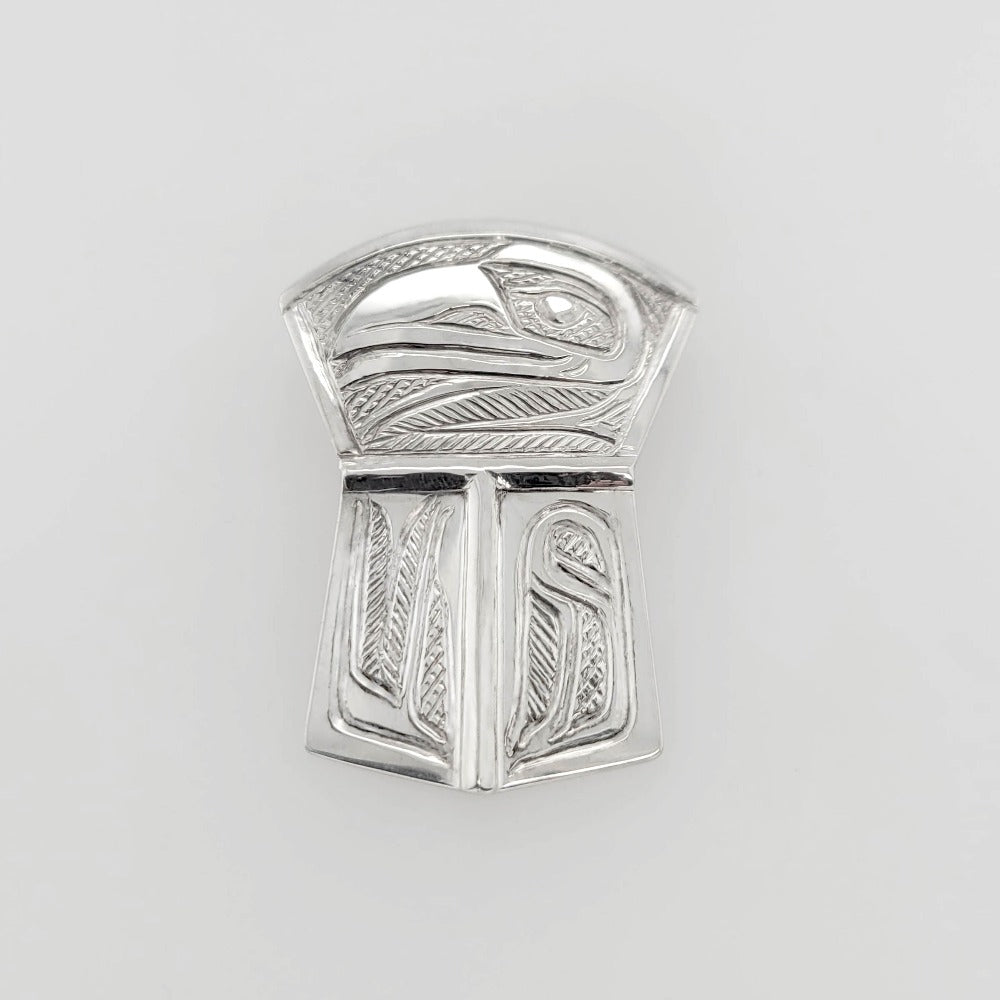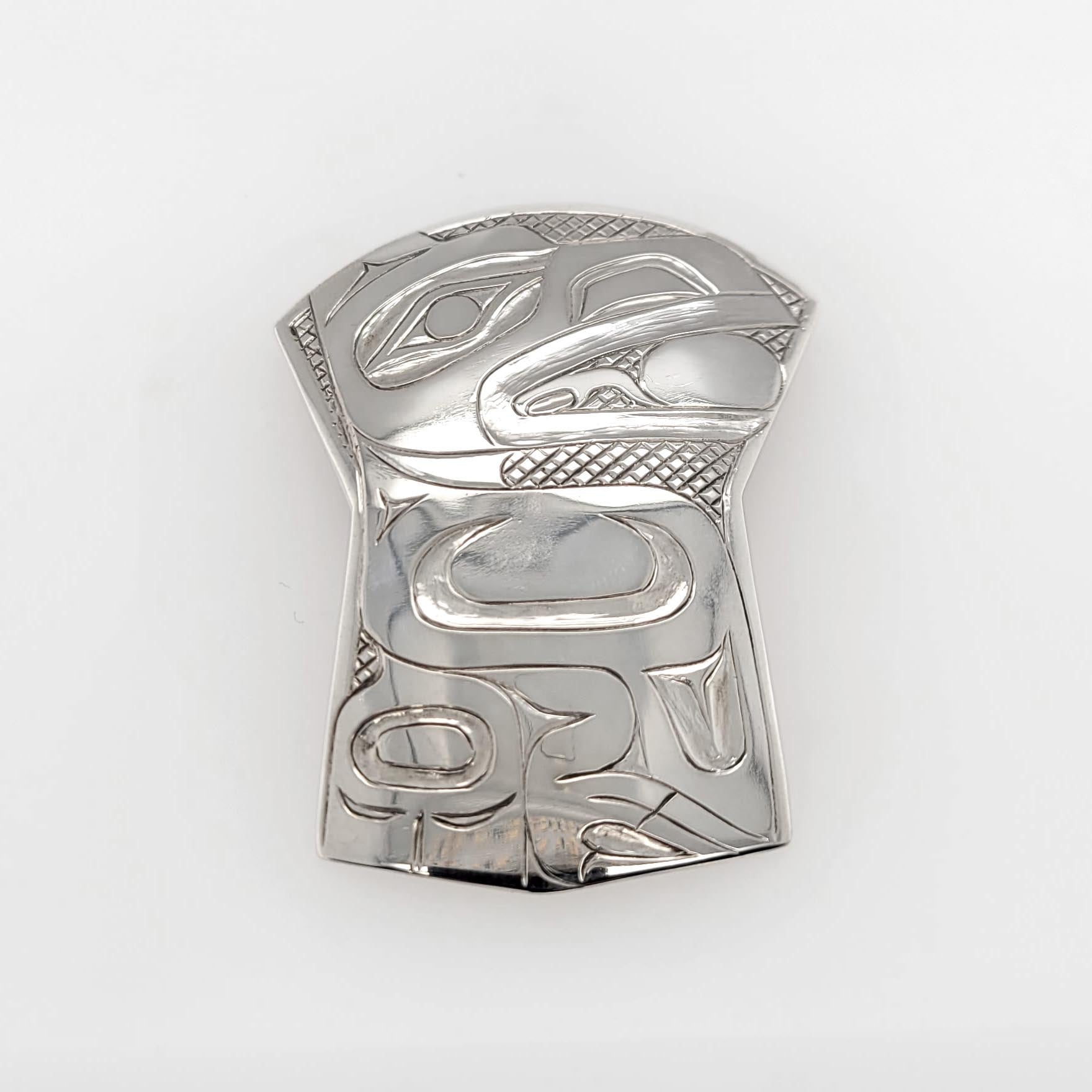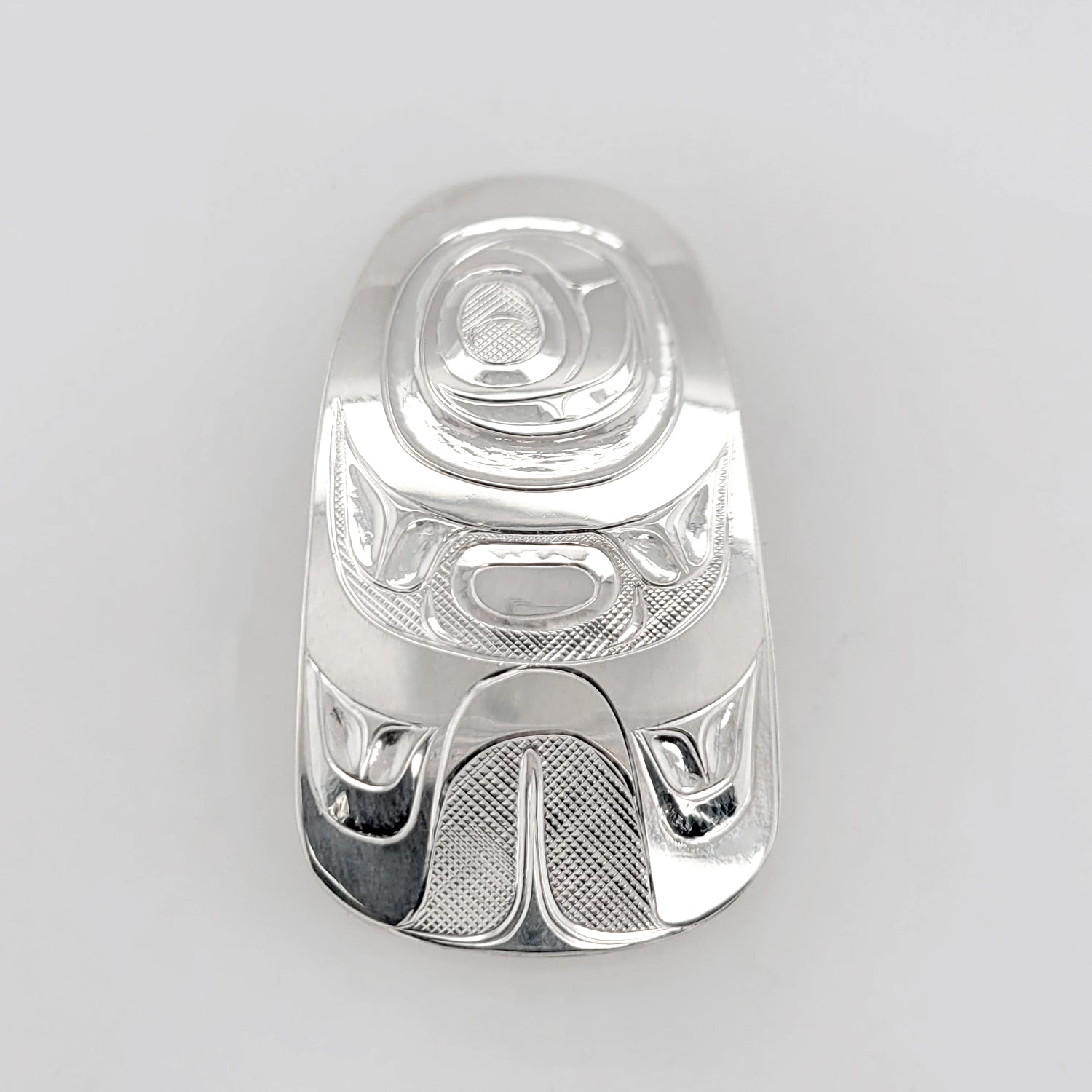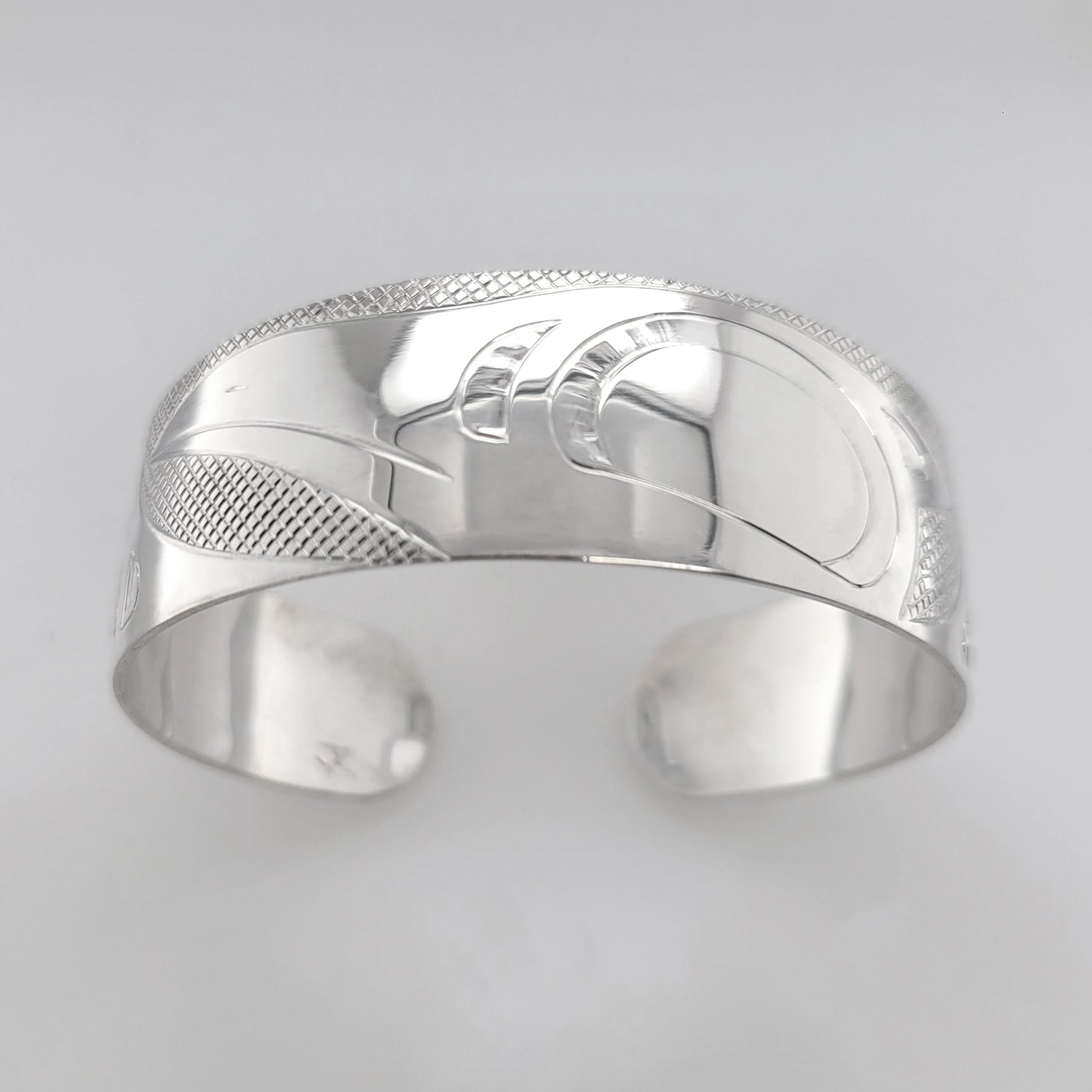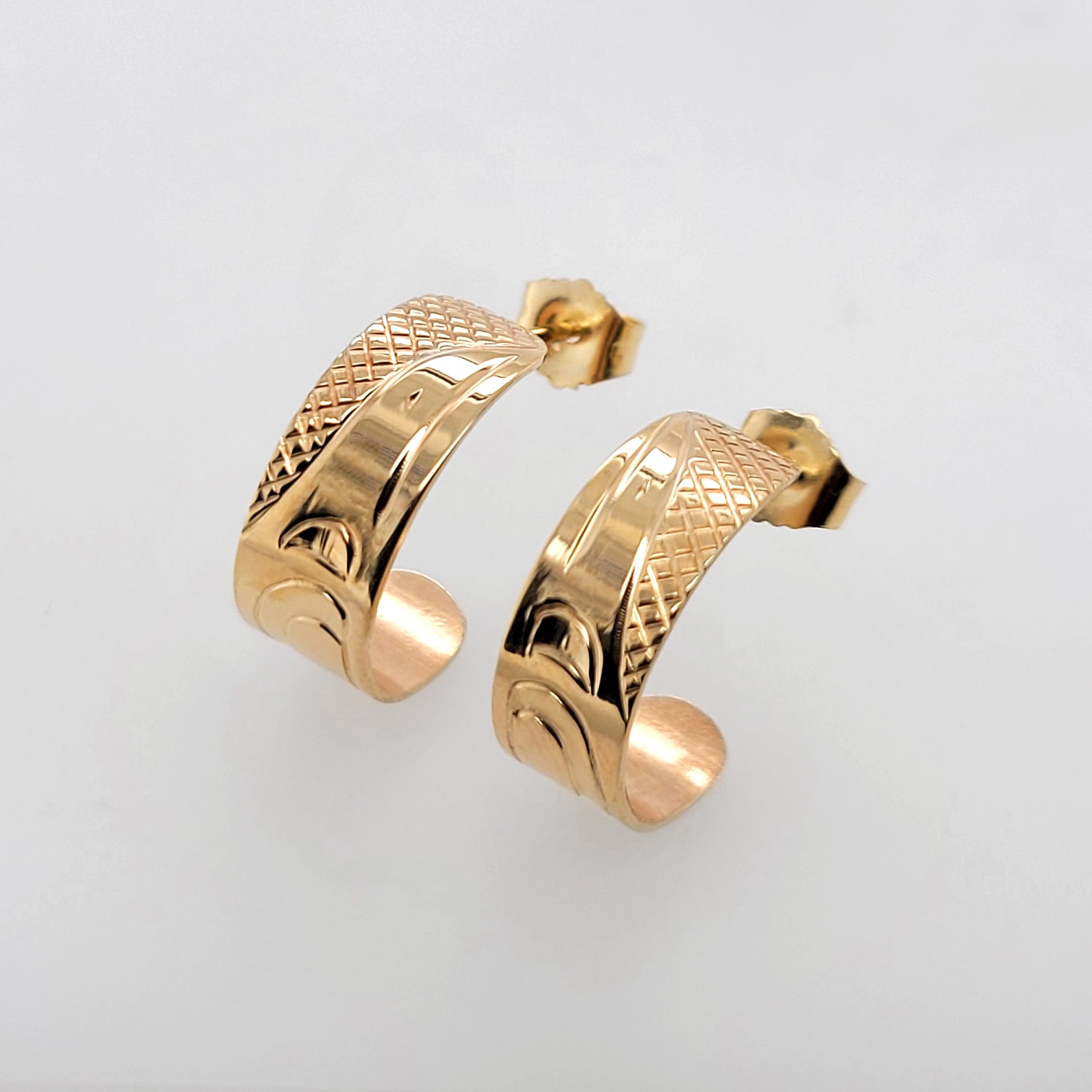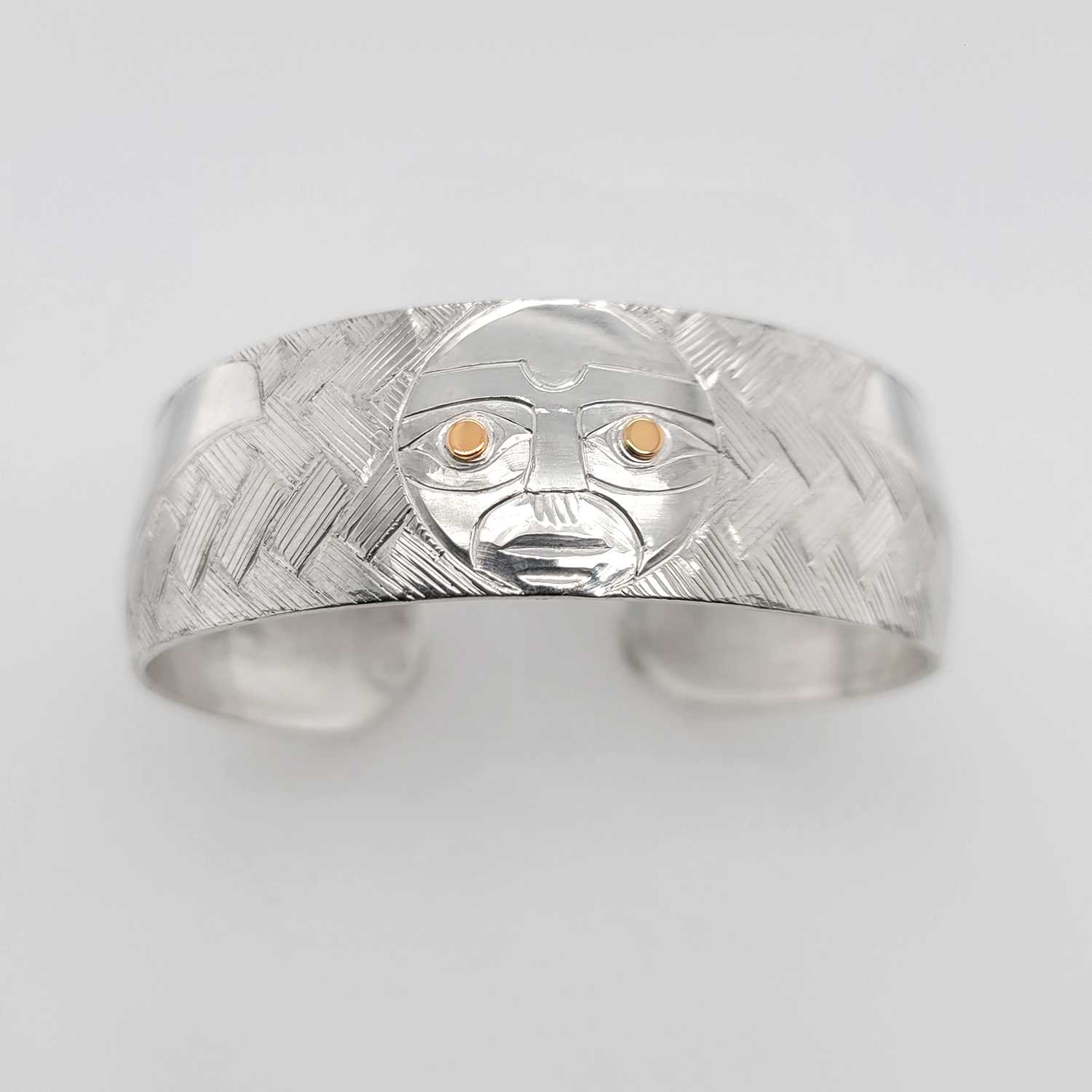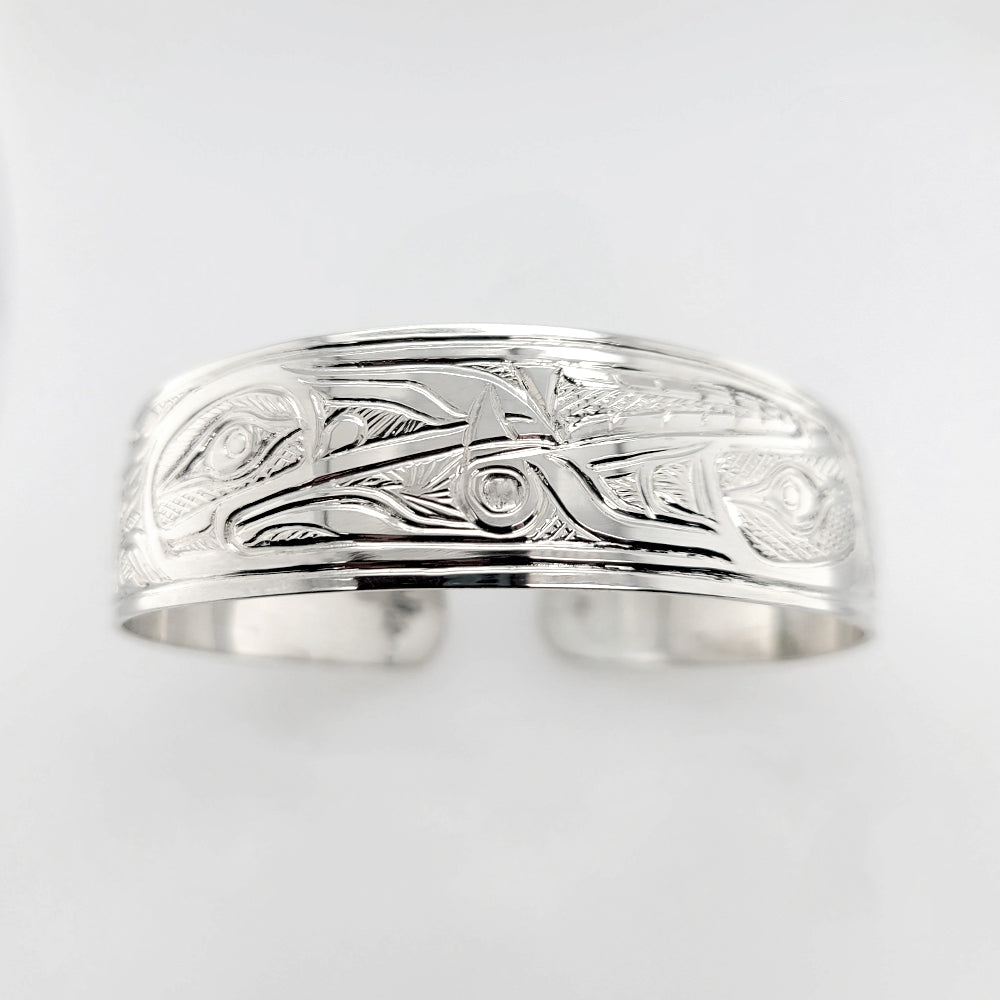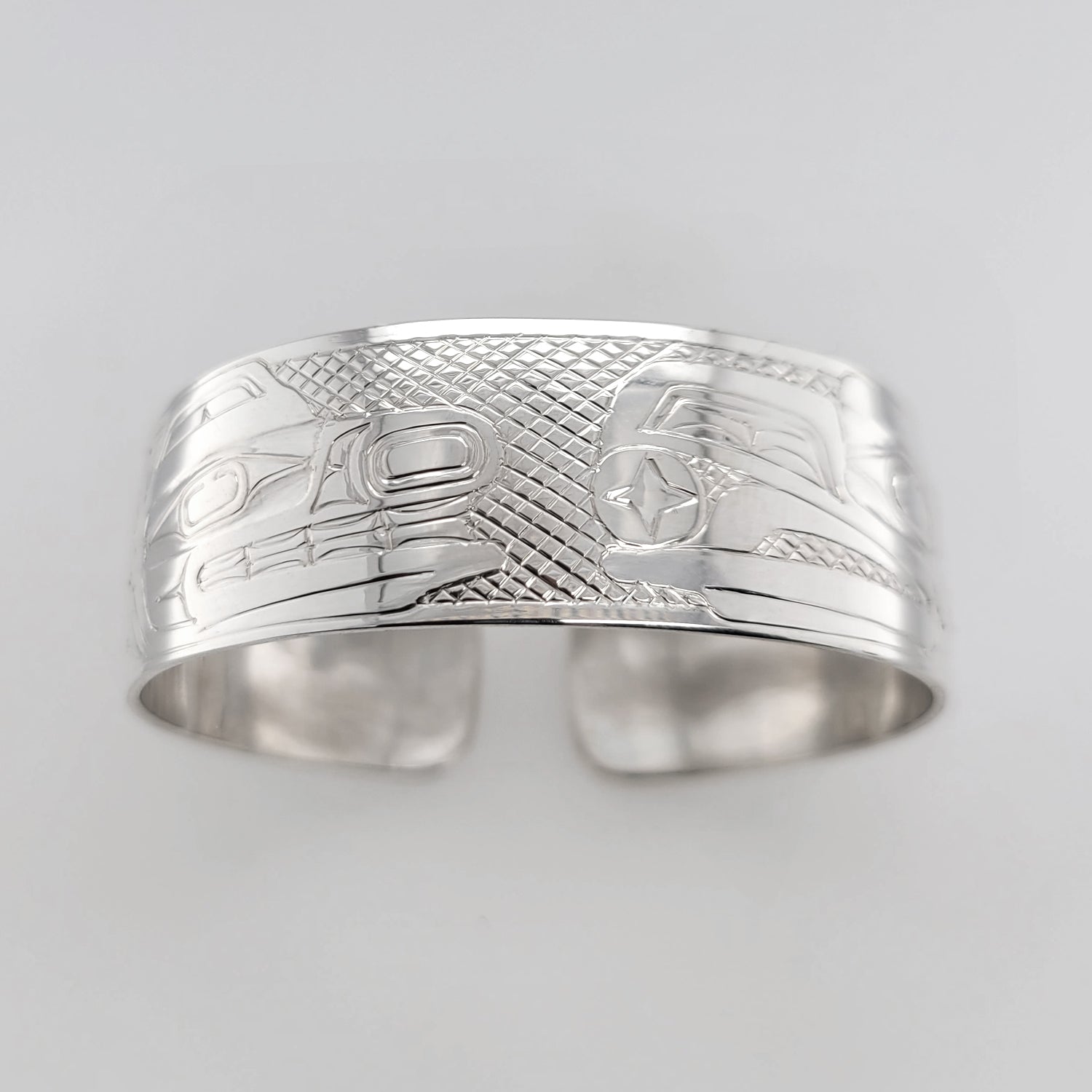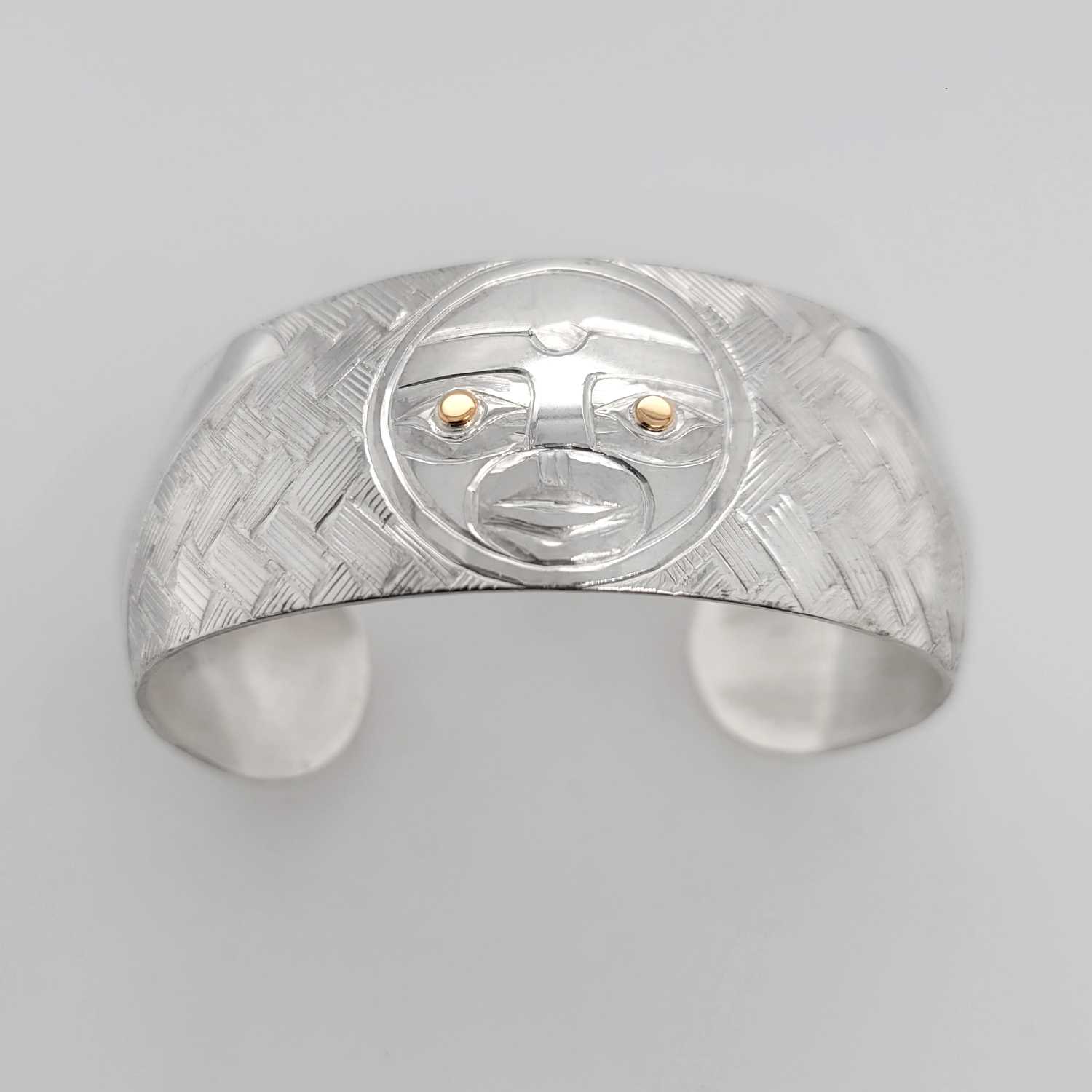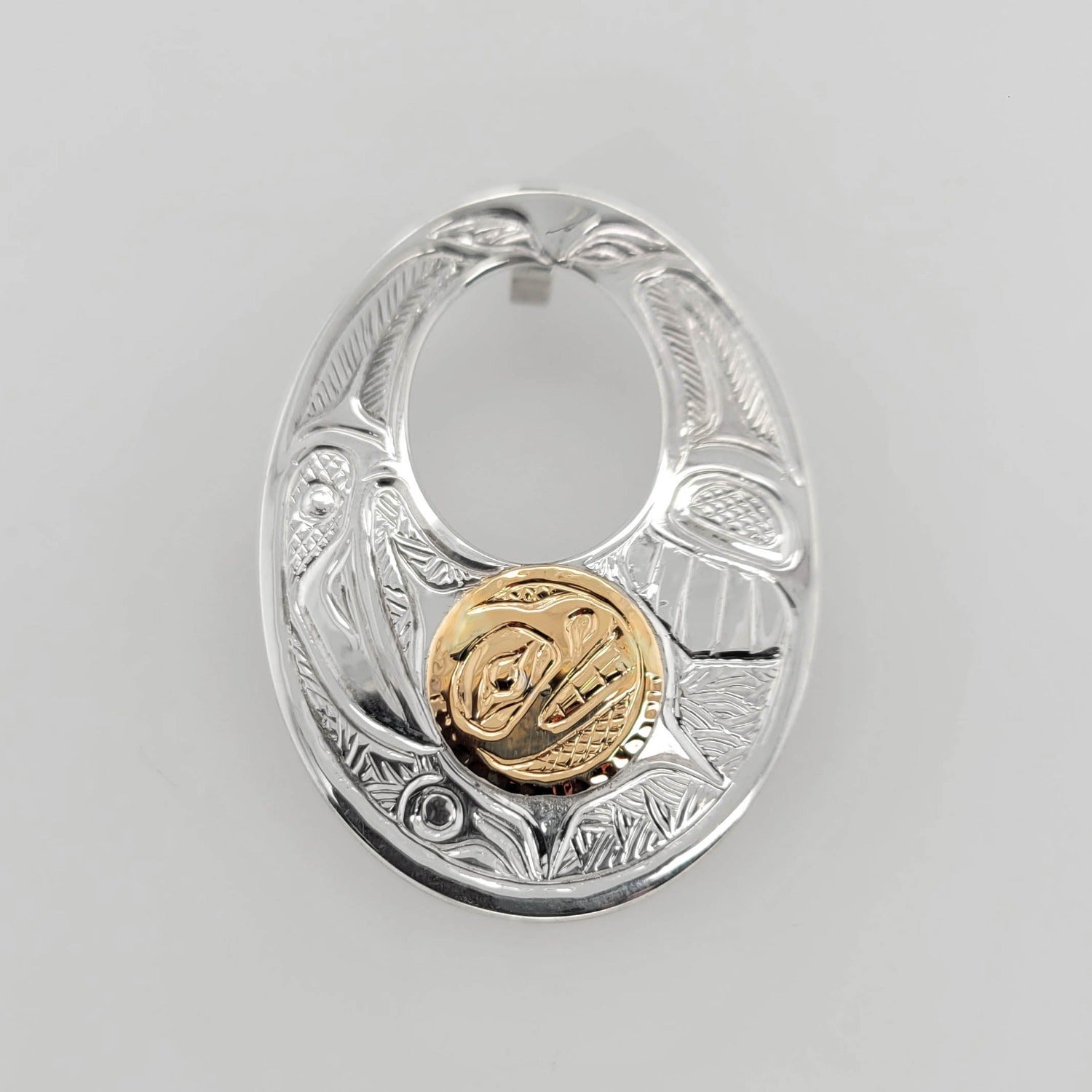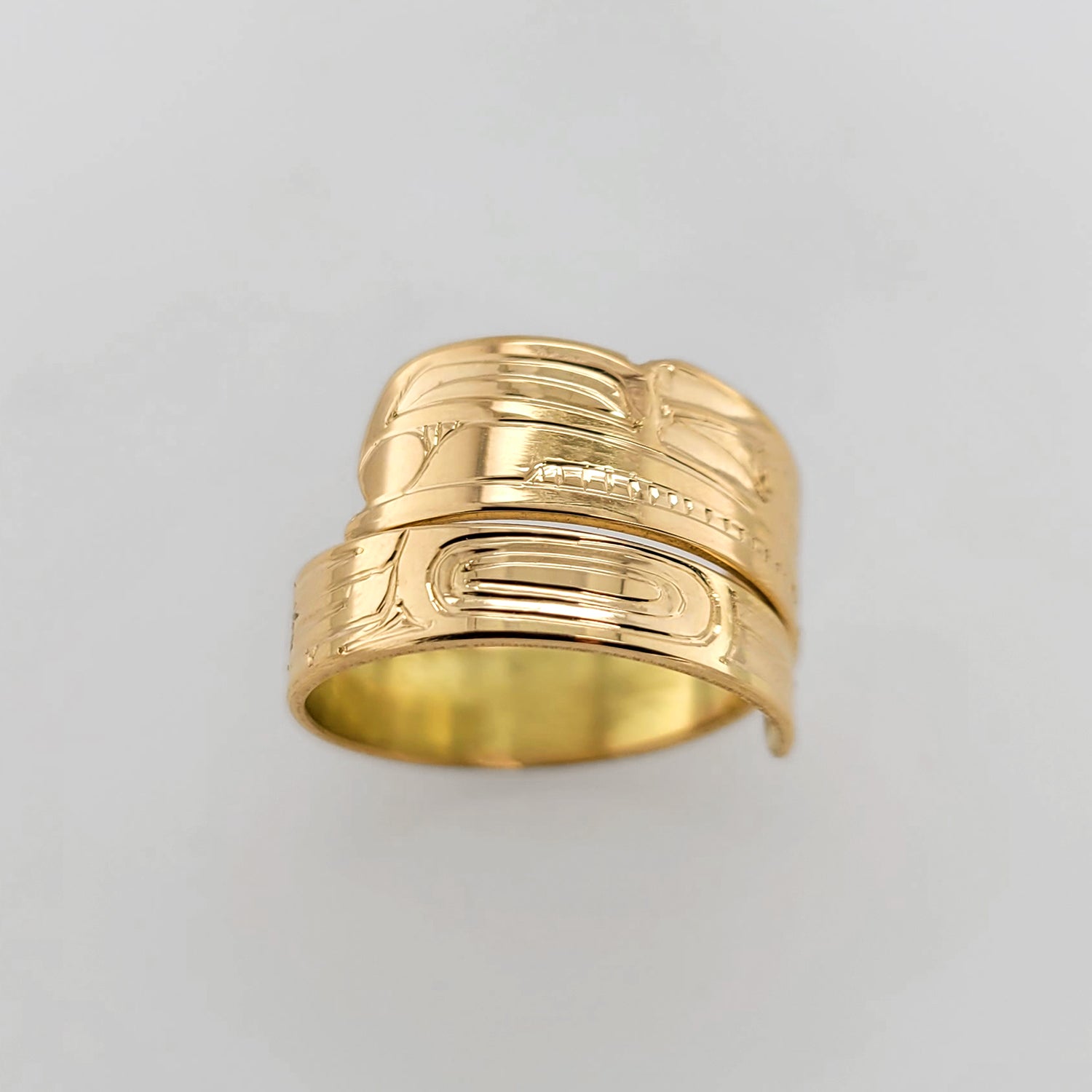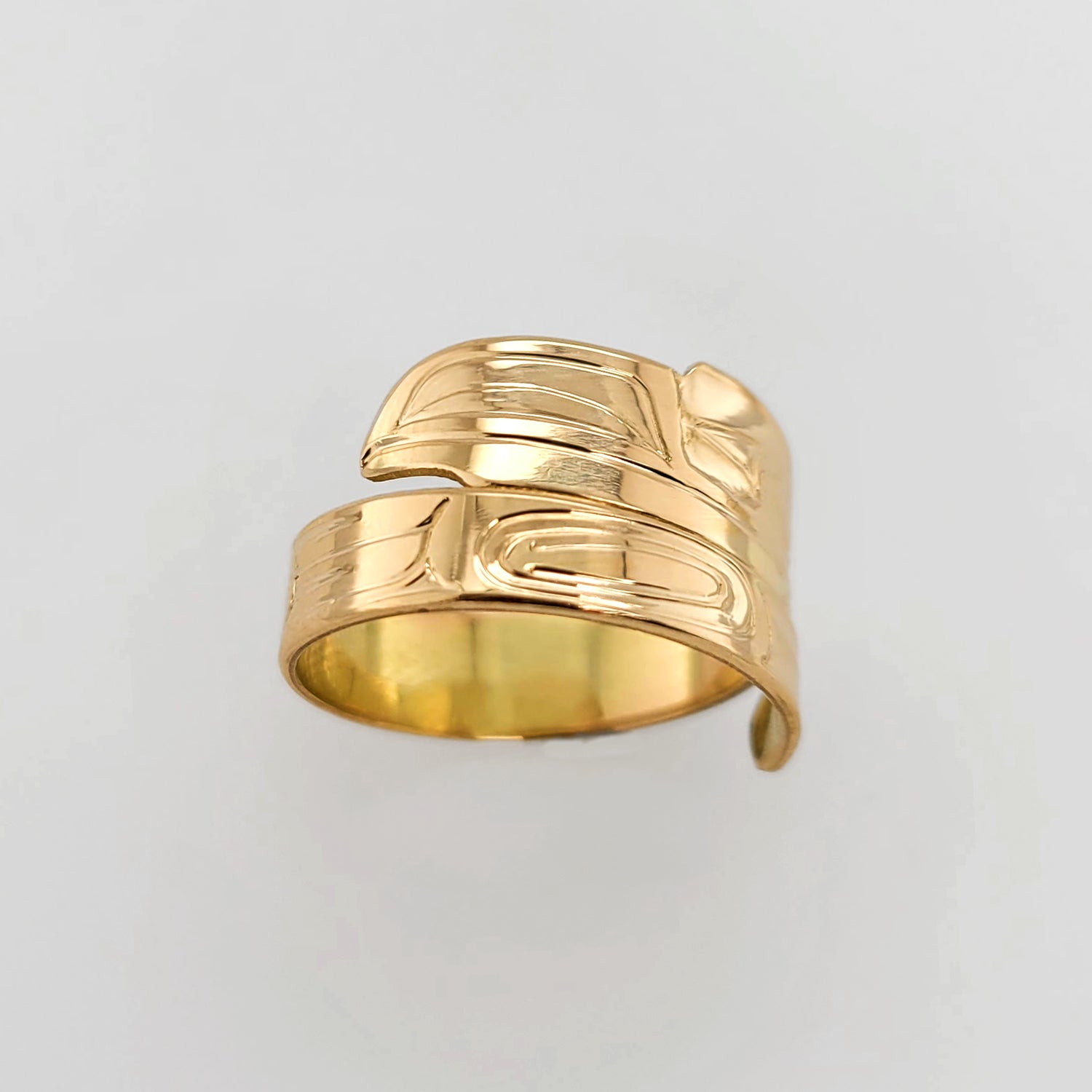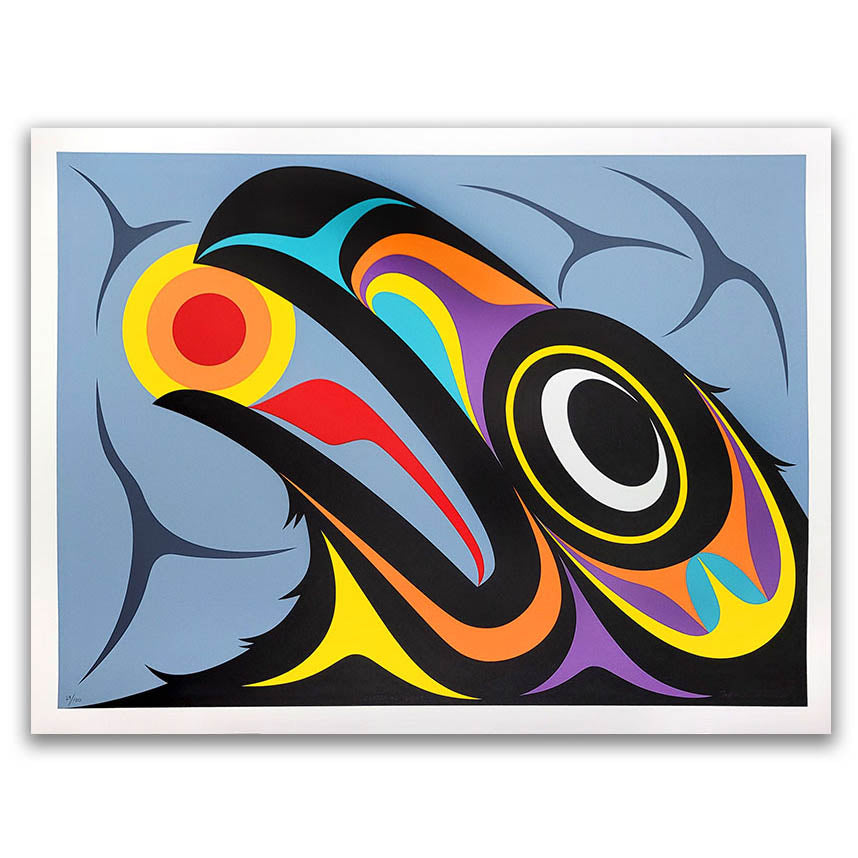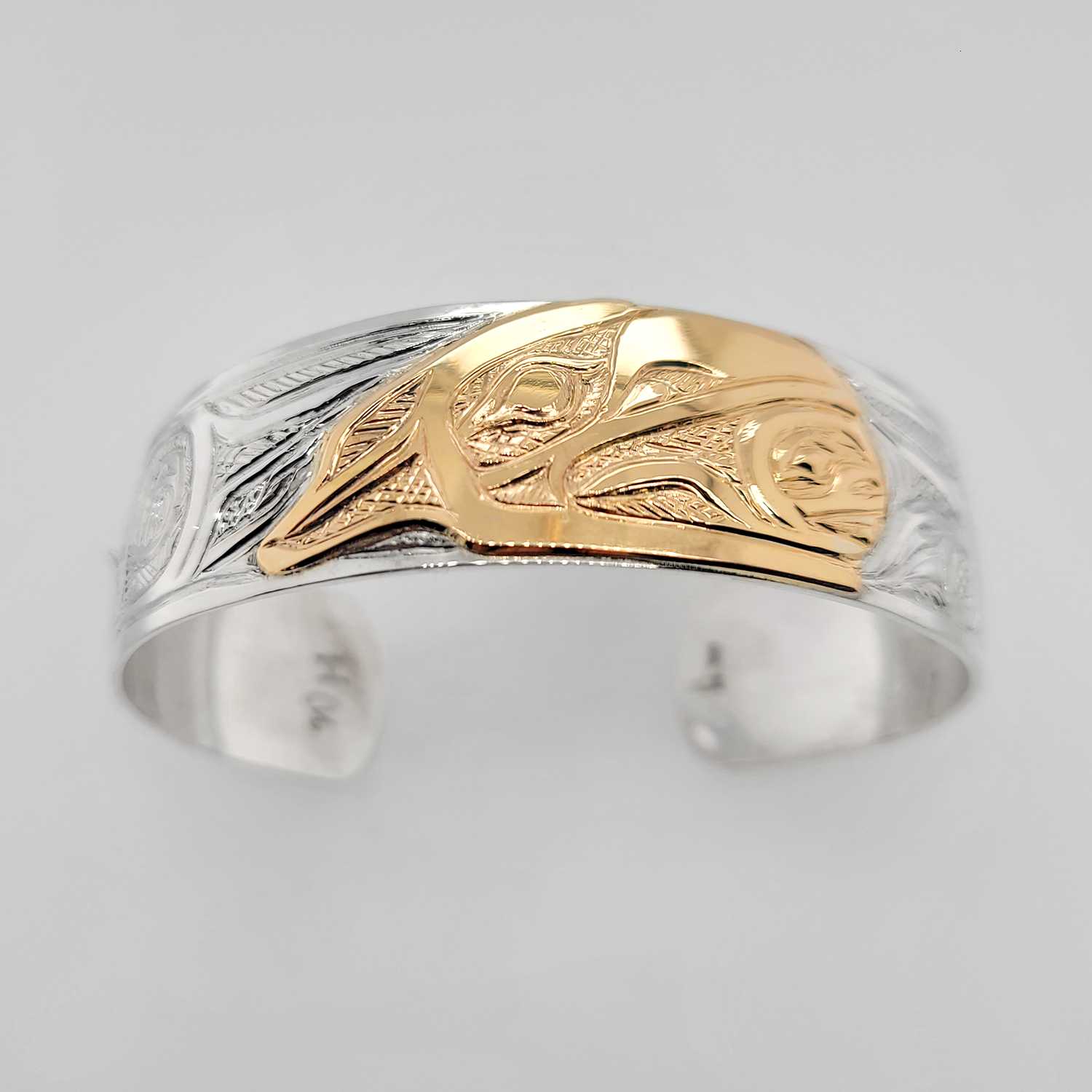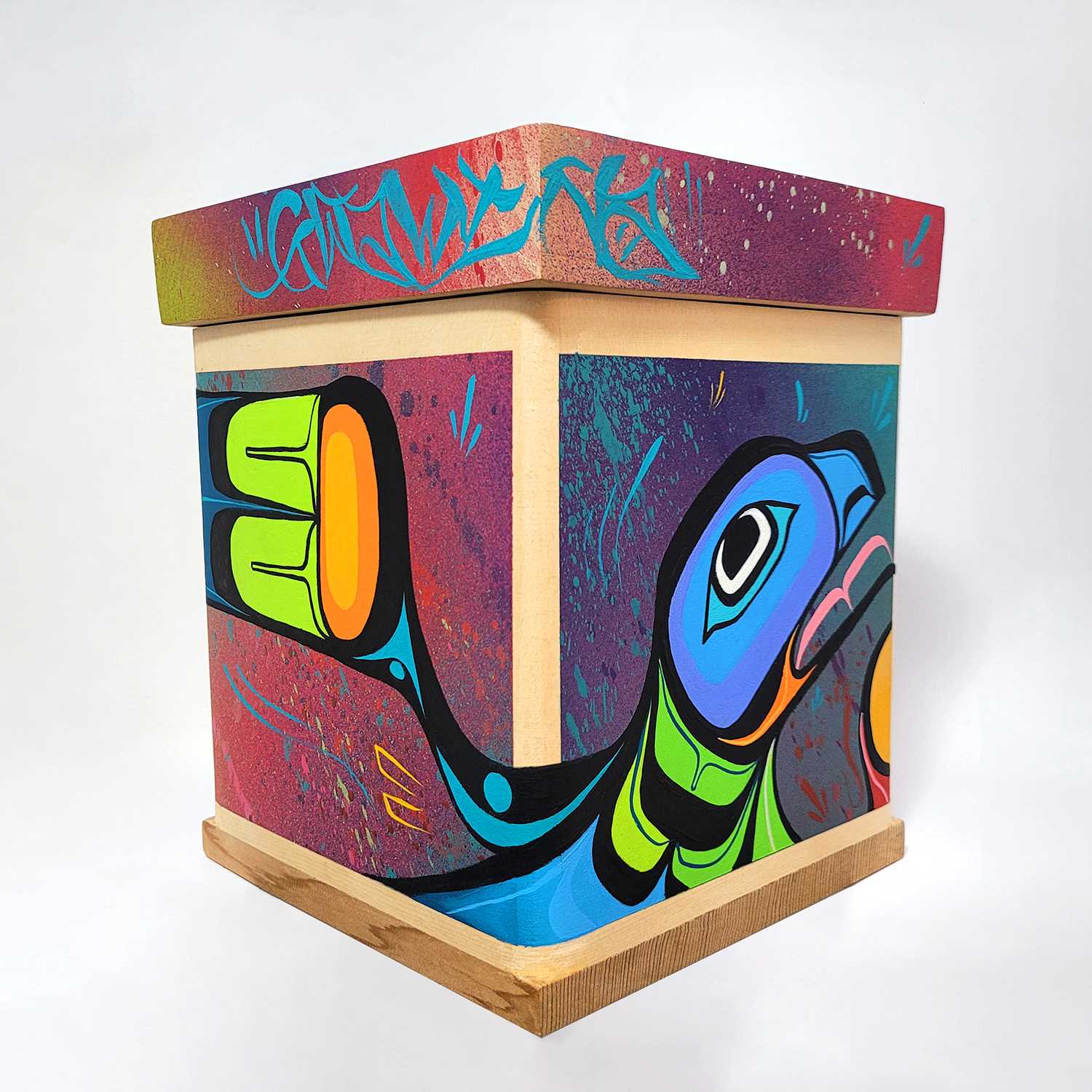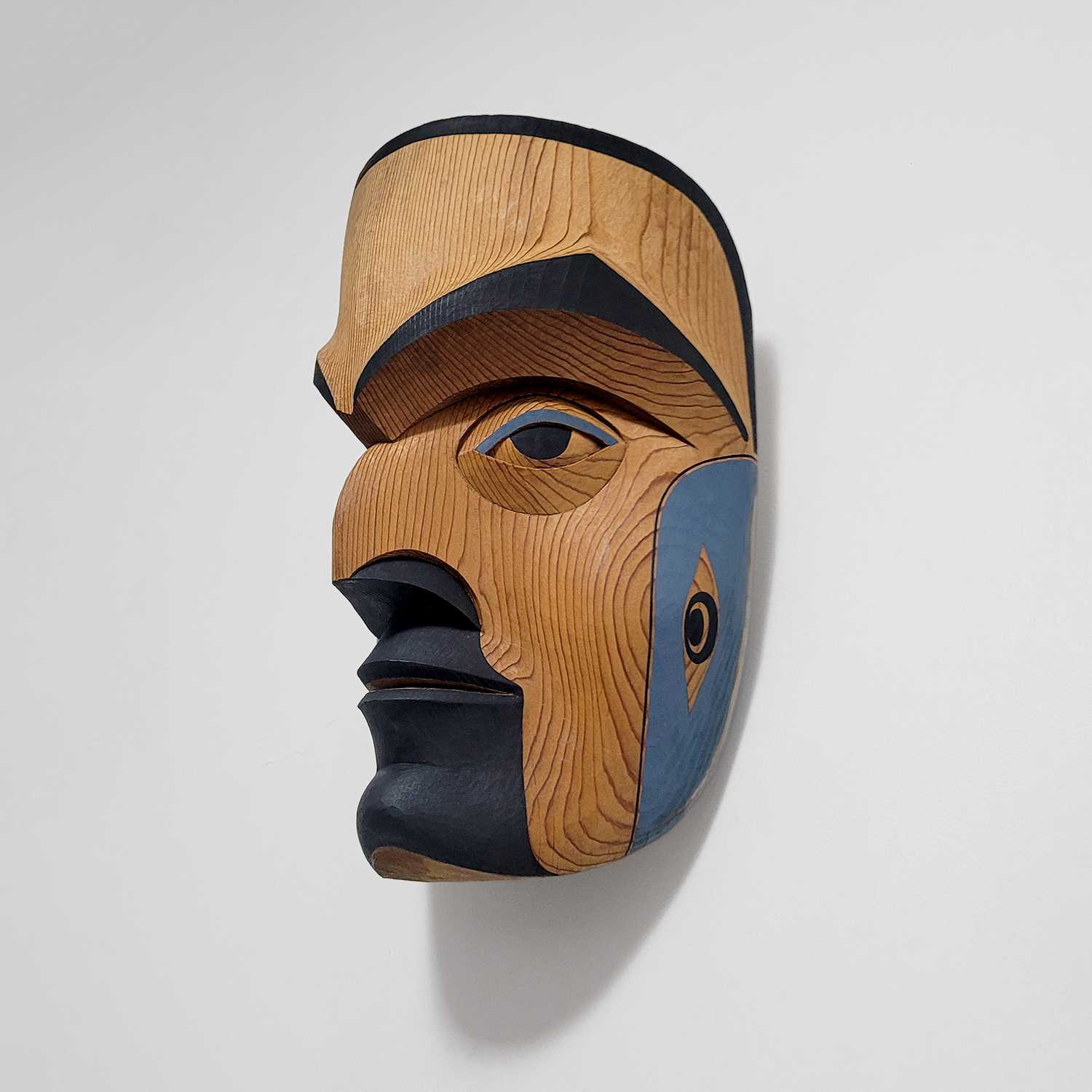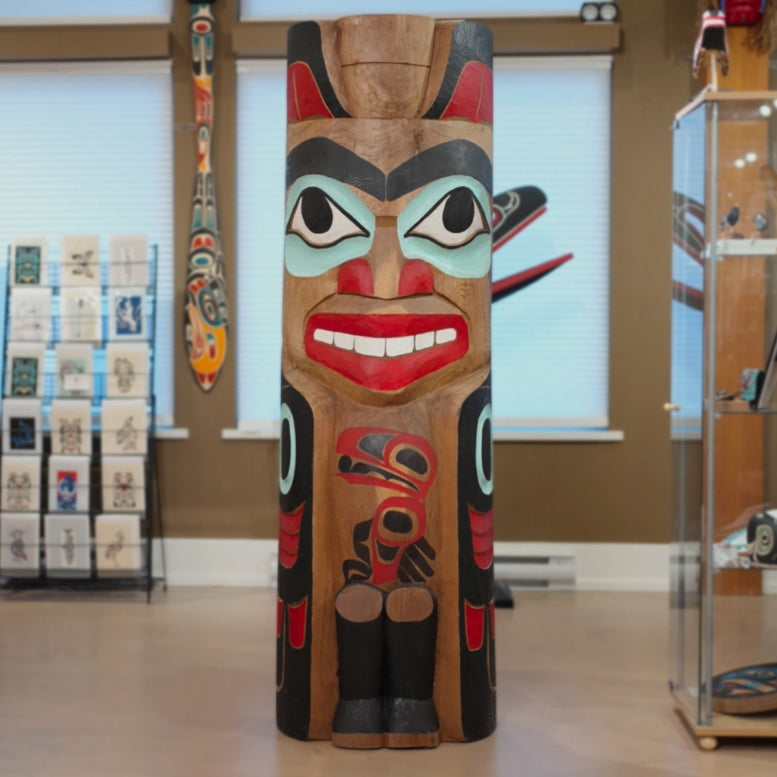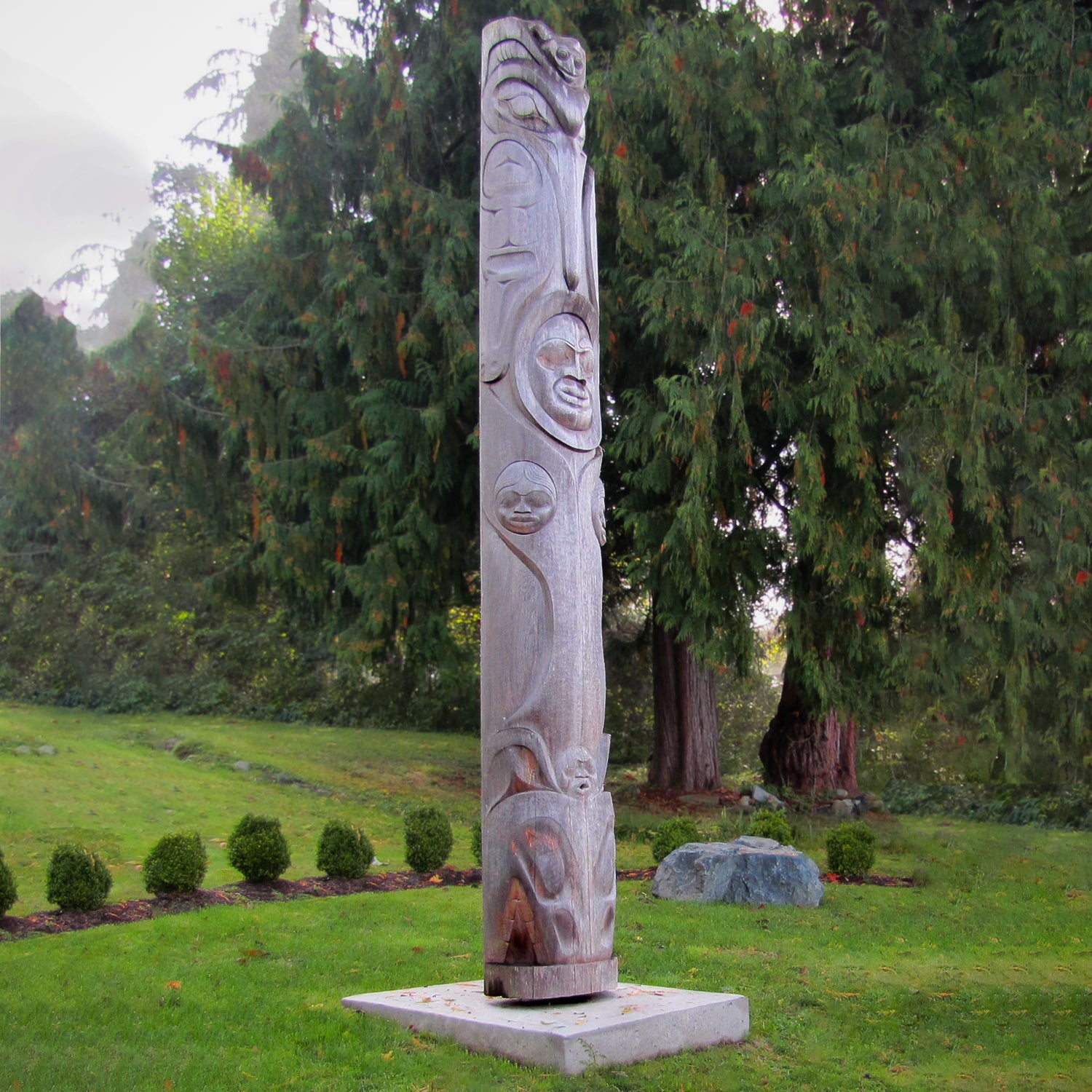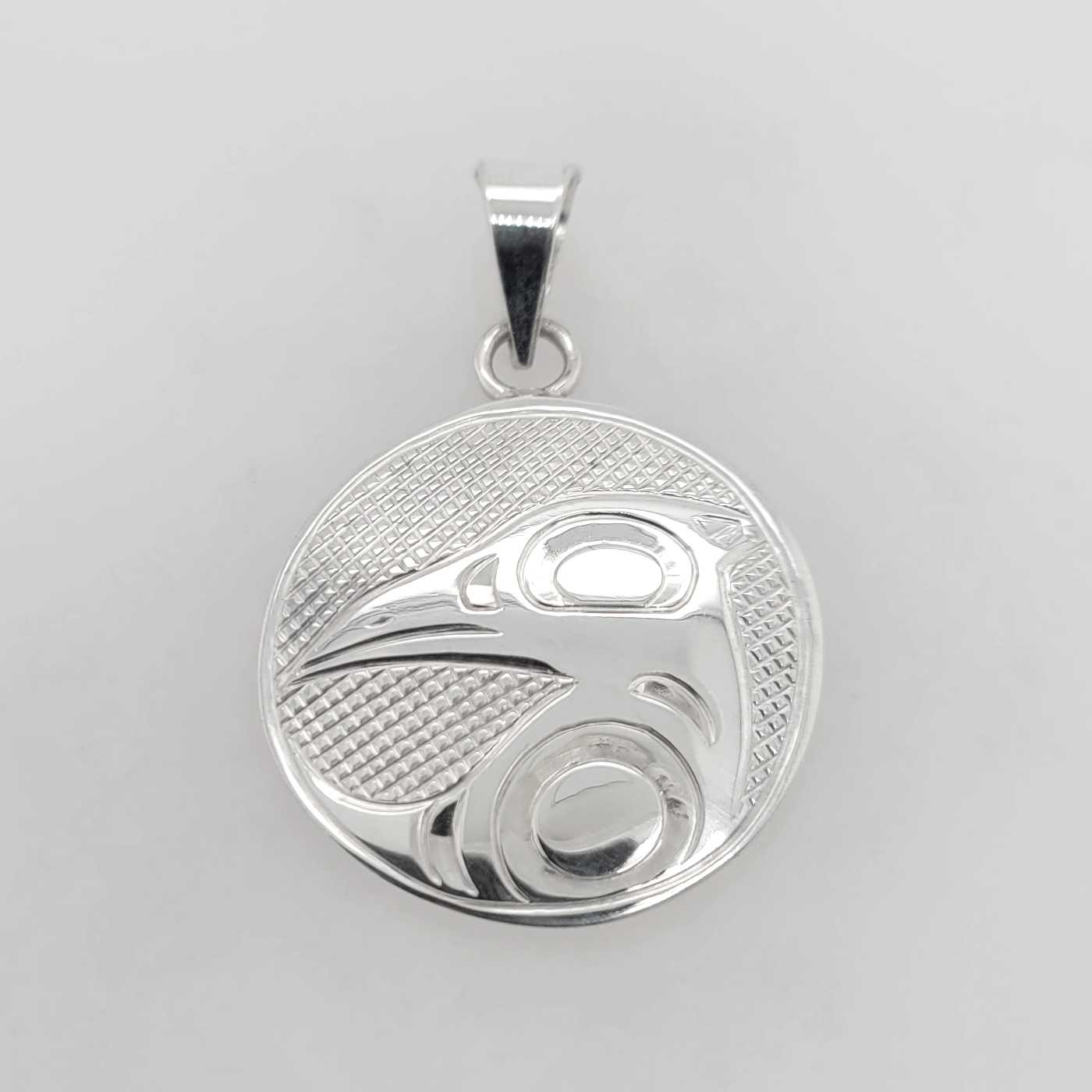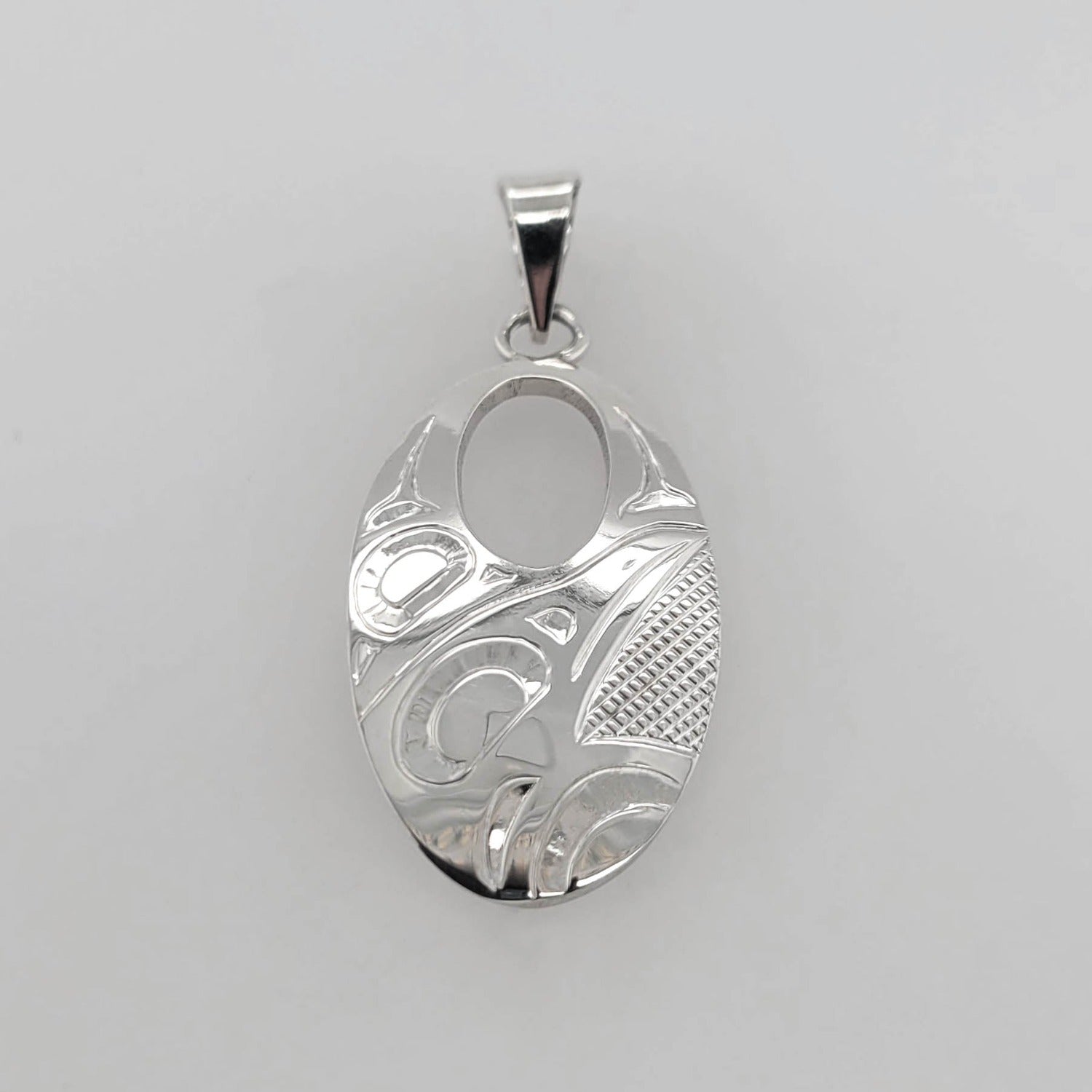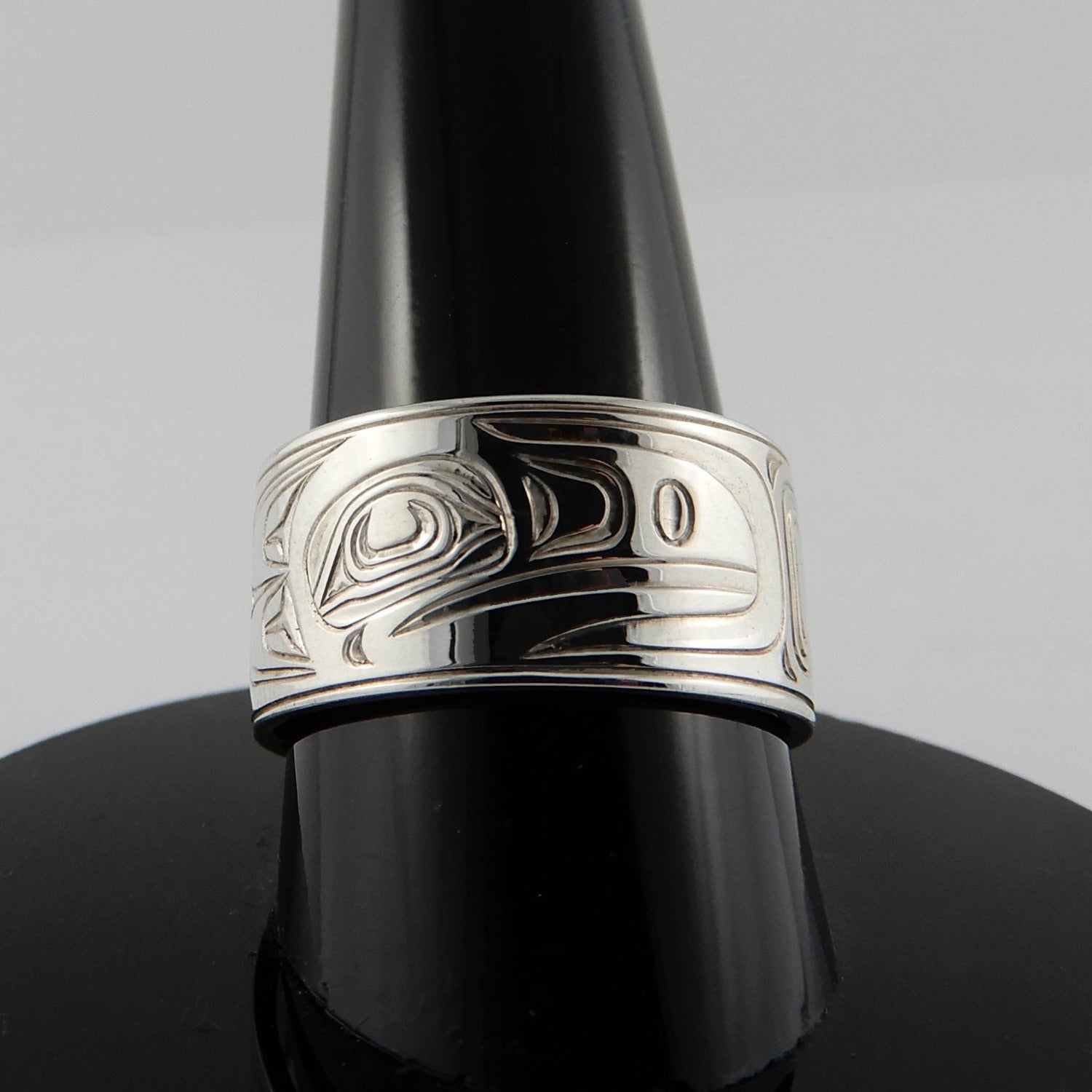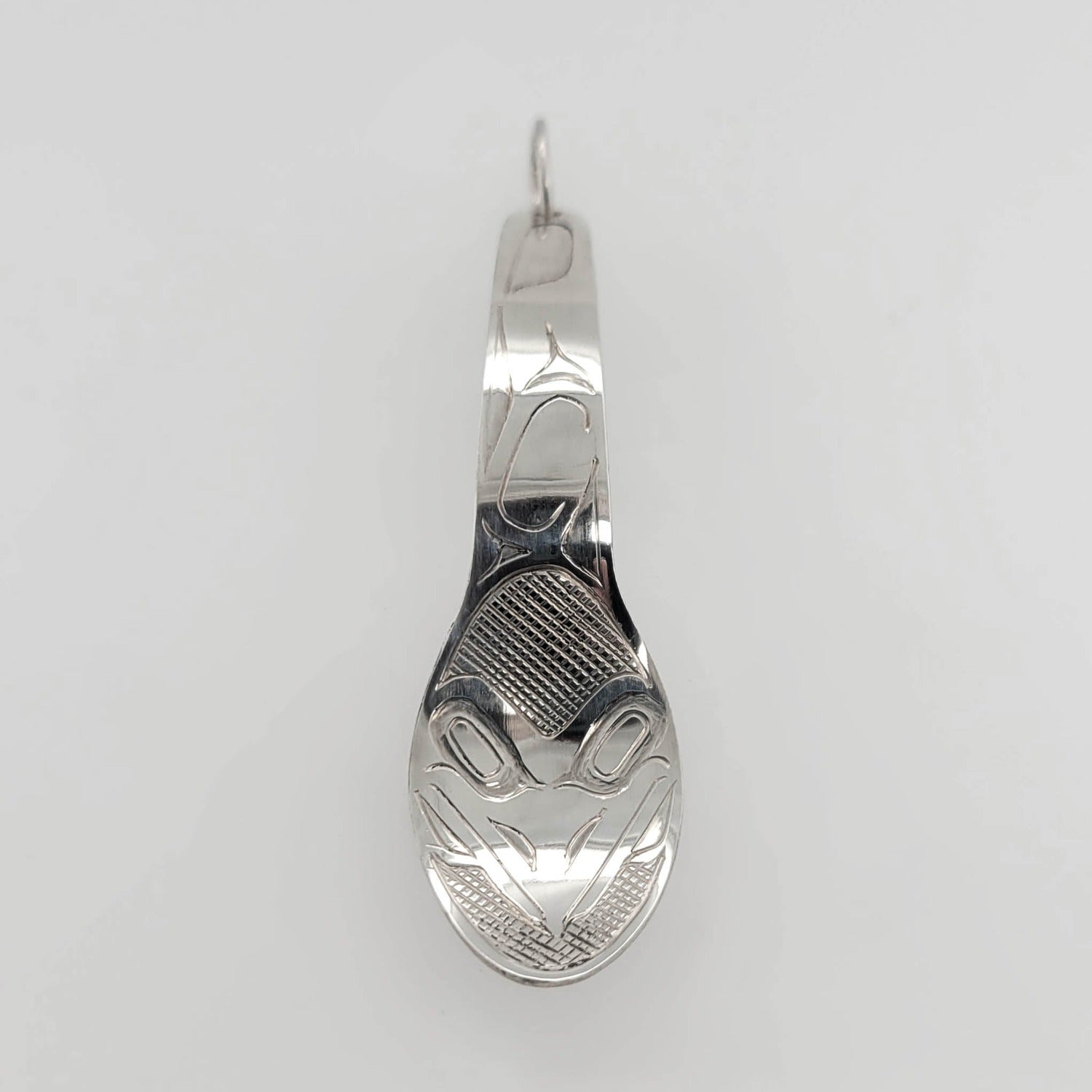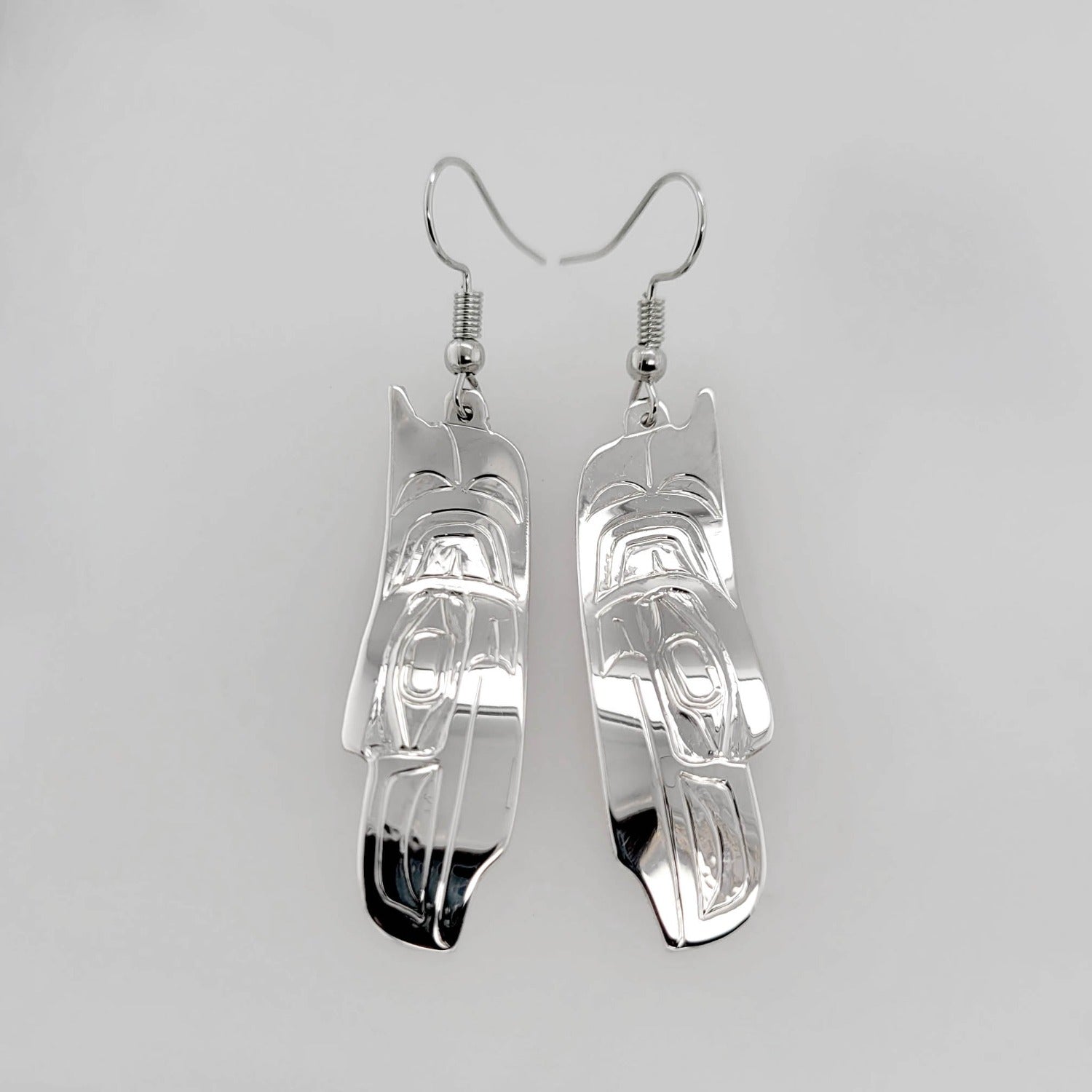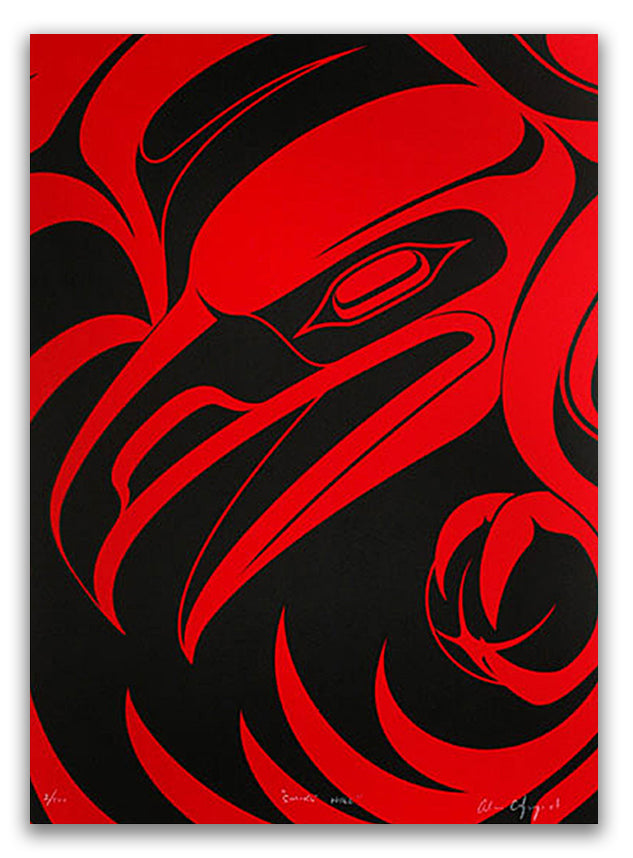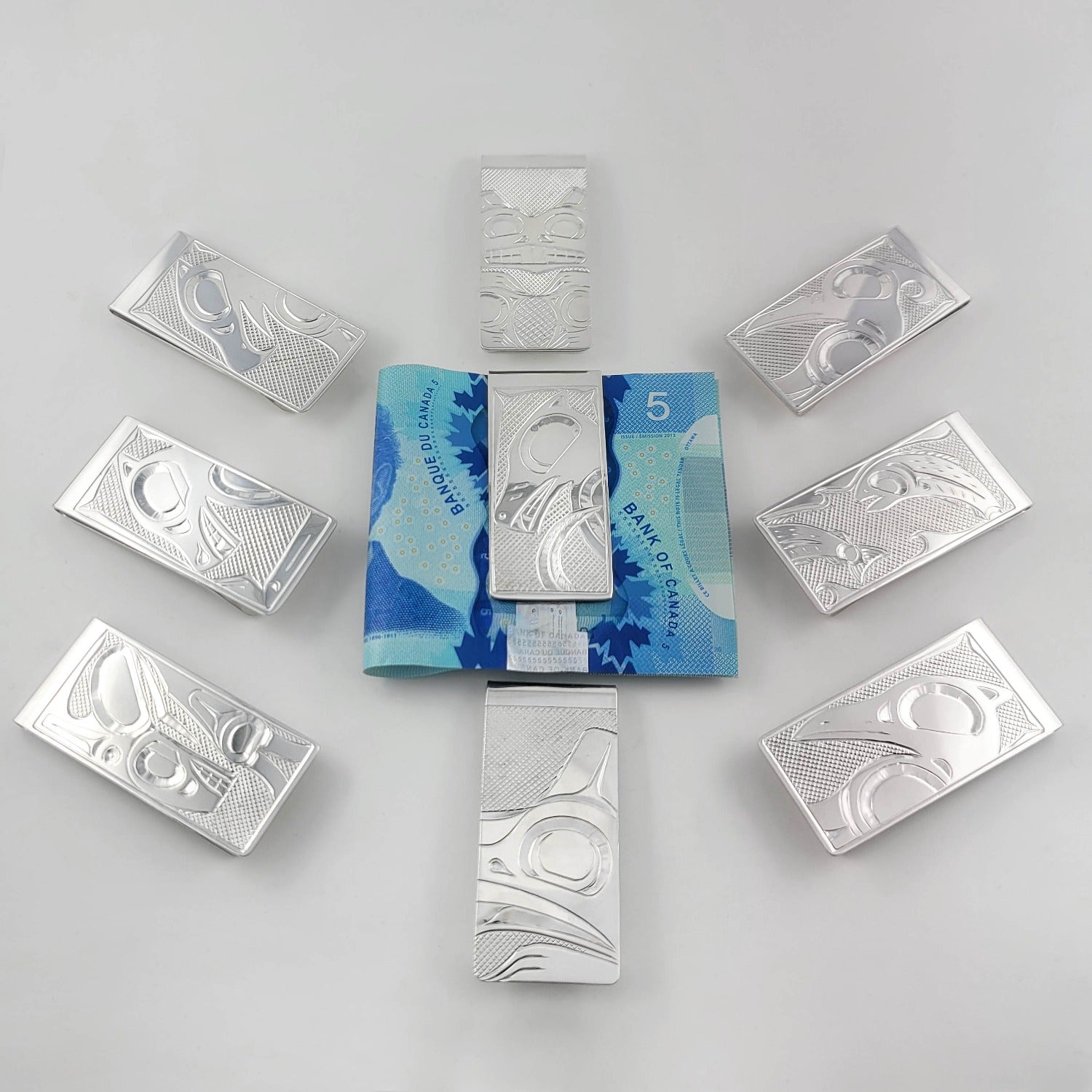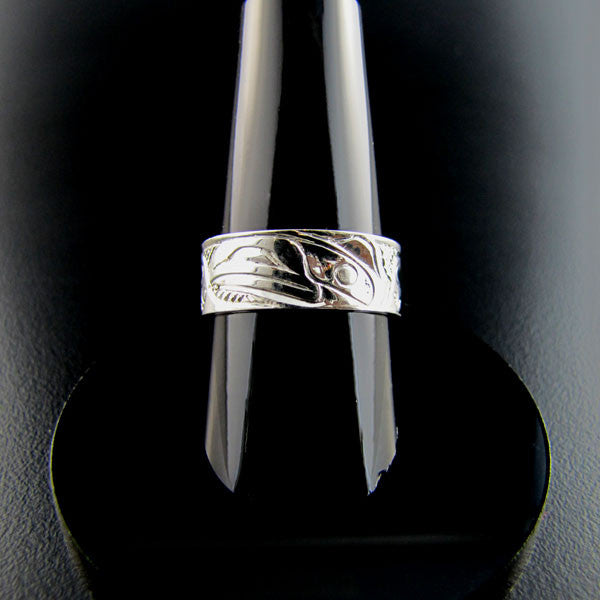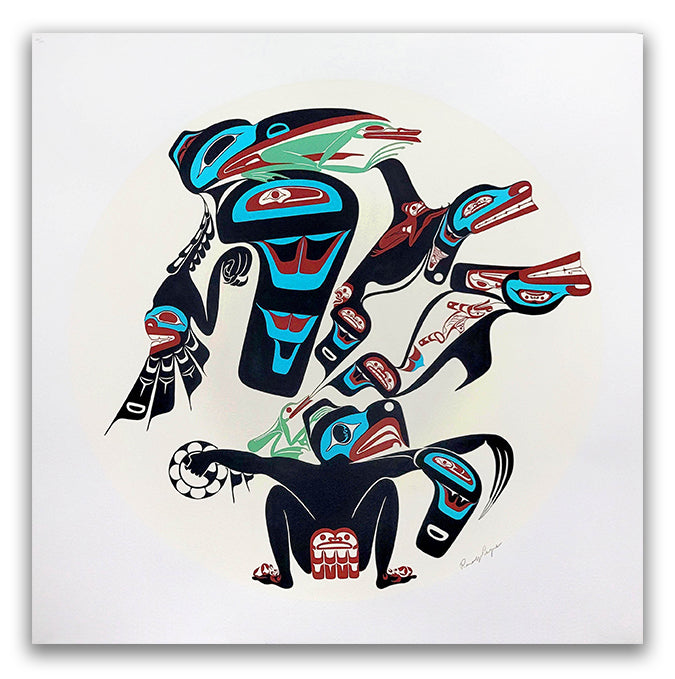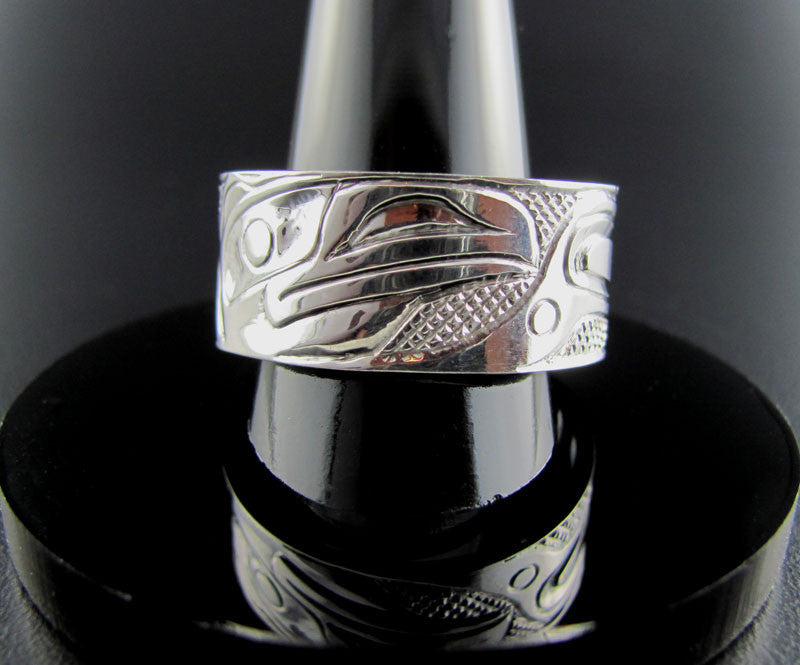The Raven
Mischievous and curious, the Raven plays many important roles in Pacific Northwest Coast Culture. For some, he symbolizes creation, transformation, knowledge, prestige as well as the complexity of nature and the subtlety of truth. He also symbolizes the unknown and shows that every person sees the world in a different way. The Raven was often called upon to clarify truths in visions, as the wise elders knew that what the eye sees is not always the truth. Many people of the Pacific Northwest Coast refer to him as a helper to the creator, and it is believed by some that messages from the creator of the cosmos are buried in the wings of the Raven only to be released to the families most deserving of his knowledge. The Raven is a long-distance healer and is known as the “keeper of secrets,” he helps us in our lives by exposing the truth of keeping secrets that could potentially harm us, in doing so he helps us back to good health. The Raven was only ever feared if misused.
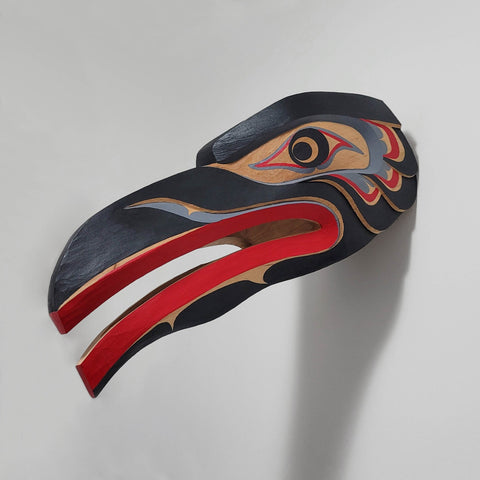
Raven Mask by Kwakwaka'wakw artist Talon George
Raven Symbol and First Nations
Besides being a member of many different clans, most descendants from the Haida Northwest Coast First Nations belong to either a Raven or Eagle Clan. The membership is often defined by which clans the mother belonged to.
In many Northwest Coast Communities stories are told about the Raven and his many achievements. One of the most common stories is how the Raven stole the light in the form of the sun, the moon and stars. Many say that he transformed himself into a baby to find out where the light was hidden and then stole it from an old chief who had kept them in his house locked away in a large bentwood box. After Raven escaped with the box through the smoke hole of the house, he placed the sun, the moon and the stars in the sky for all beings to enjoy. Originally the Raven had white feathers and after flying through the smoke hole with the light, his feathers turned black and stayed black until today.

Raven Steals the Light Bracelet by Tsimshian artist Bill Helin
The Haida tell of how Raven stole the salmon from the Beaver people. Raven again transformed himself into a chieftain’s baby to find out from the beaver people, where they were hiding the salmon from all the other beings. After living with the beaver people for many years he finally found out that they were hiding all the salmon in a hidden stream flowing into a lake. On the same night after he found out, he transformed himself back into Raven and rolled up the stream and lake like a carpet and flew all over the Pacific West Coast and back to Haida Gwaii. The stream and lake with all the salmon were so heavy that he could only fly a short distance at a time. He would stop wherever there was a tree to rest. The Beaver people transformed themselves back into Beavers in order to stop him. They would gnaw down the trees that Raven stopped at and each time some salmon and water would escape, forming great streams and rivers of Salmon all over the country.
Another Haida myth is the story of the Blind Halibut Fisherman and Raven with a Broken Beak in which Raven attempts to play a joke on a blind fisherman. The myth tells of a blind man seated alone in a canoe tending to his fishing line. Raven, in an attempt to tease the fisherman, repeatedly pulls on the fishing line. On Raven’s final attempt, the fisherman suddenly pulls the line, catching Raven’s beak and breaking it off. Unsure of what had come upon his hook, the blind man asked his daughter to put the bill on a stick and raise it up above his house. An ashamed Raven emerged from the sea and tried to reattach the beak to his face, but it slipped and instead became attached to his chin, causing even more shame.
Native Art - The Raven Symbol
Spirits of the West Coast Native Art Gallery sells Raven Symbol prints, Native American Jewelry, Raven Native carvings, Raven ceremonial masks, gold and silver bracelets, and bentwood boxes, all inspired by the Raven Symbol.
Contributions
If you have any further information or stories with or about this Native American Symbol or totem and you would like to share them with our readers, please feel free to email them to us. If they are appropriate we will add them to this page. Thank you!






